|

HOME |
ABOUT | INDEX |
NEWS |
FACEBOOK |
CONTACT
BODY IMAGE
Fat Phobia | Body Shaming | Body Positivity
Body Image and
Shame
Beauty
has no size, no skin tone, no hair
color, no eye color, no facial features,
no muscle definition… for we are all
uniquely beautiful and the standards are
unreal.
Body
image and shame are two interlinked
concepts that have a profound impact on
individuals' mental and emotional
well-being. Body image refers to the
perception, thoughts, and feelings one
has about their own body, while shame is
the intense feeling of inadequacy or
unworthiness often associated with
perceived flaws or imperfections. The
relationship between body image and
shame is intricate and can be shaped by
societal influences, media
representation, cultural norms, and
personal experiences. In this essay, we
will explore the detrimental effects of
body image issues and shame on
individuals and society while
highlighting the importance of fostering
a positive body image and combating
shame.

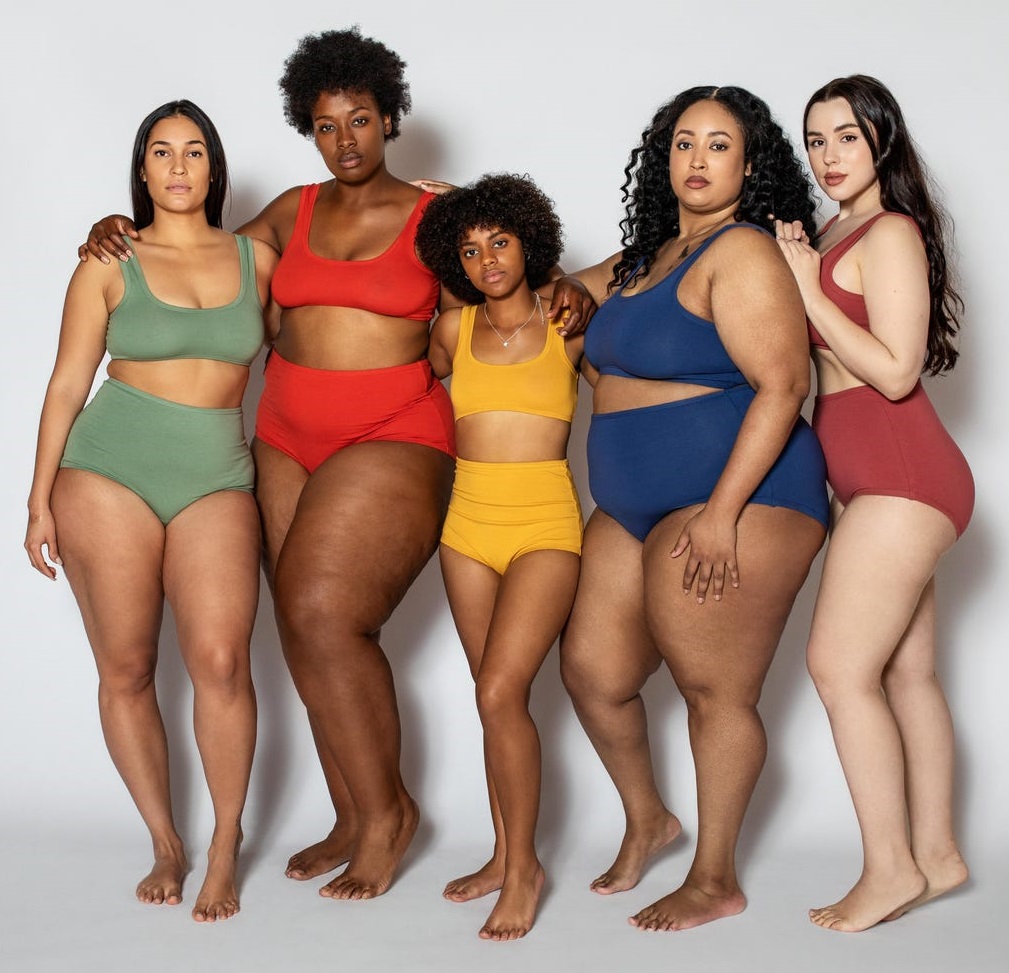
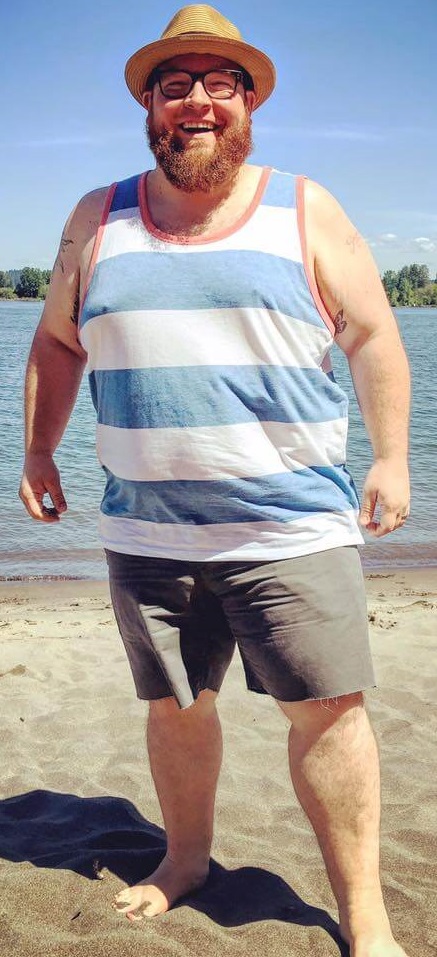
Physical Fitness vs. Body Shaming
Men and Women:
Comments About Their Body
Why We Need Queer Fat
Representation: We Are Worth Taking Up
Space
All About Body Image: How
Psychologists Define It and How It
Affects Health and Well-Being
Fatphobia is Alive and Rampant in the
Gay Male Community
Jameela Jamil Defends Sam Smith After
the Singer was Body-Shamed
Body Image, Sexual Orientation, and
Gender Identity
The Guide: Gay Bodies and Expressions
Negative Comments About Your Body
Society plays a pivotal role in shaping
our perceptions of the ideal body.
Media, advertisements, and social
platforms often perpetuate unrealistic
beauty standards that are unattainable
for the majority of people. This
constant bombardment of images featuring
flawless bodies can lead individuals to
compare themselves and develop negative
body images. As a result, many
individuals may experience feelings of
shame when their appearance does not
align with these artificial standards.
A negative body image can significantly
impact an individual's self-esteem. When
someone feels dissatisfied with their
appearance, they may experience a
constant fear of judgment and rejection,
which further fuels feelings of shame.
Low self-esteem and shame can create a
vicious cycle, leading to social
withdrawal, anxiety, depression, and
even eating disorders as individuals
attempt to attain the societal "ideal"
and avoid shame.
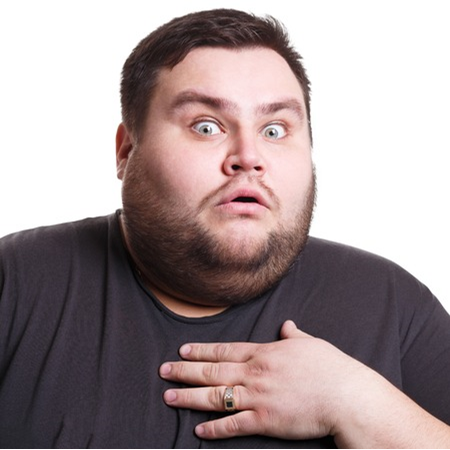


Ways to Deal with Body Shaming
Men in the Mirror: A Closer Look at Body
Image
Sam Smith Opens Up About Overcoming Body
Dysmorphia
Why Body Image Issues Pervade the Gay
Community
For Shame, Body Shamers!
No Fats, No Fems: Everything That's
Wrong With the Gay Community
Queer Body Collective
Sam Smith Talks About Their Struggle With Body Weight
Secrets by Mary Lambert
The relationship between body image and
shame can have severe consequences for
mental health. Feelings of shame can
erode self-worth and lead to a distorted
perception of oneself. The constant
self-criticism and negative self-talk
can manifest in various mental health
issues, such as anxiety disorders, body
dysmorphic disorder (BDD), and
depression. These mental health
challenges may, in turn, exacerbate body
image issues and perpetuate the cycle of
shame.
Promoting body diversity and acceptance
is crucial in challenging the harmful
societal beauty standards and reducing
shame associated with body image.
Encouraging positive body image means
celebrating and accepting bodies of all
shapes, sizes, and appearances.
Recognizing that beauty comes in various
forms helps foster a culture of body
positivity, where individuals can
embrace their uniqueness and feel less
inclined to compare themselves to
unattainable ideals.
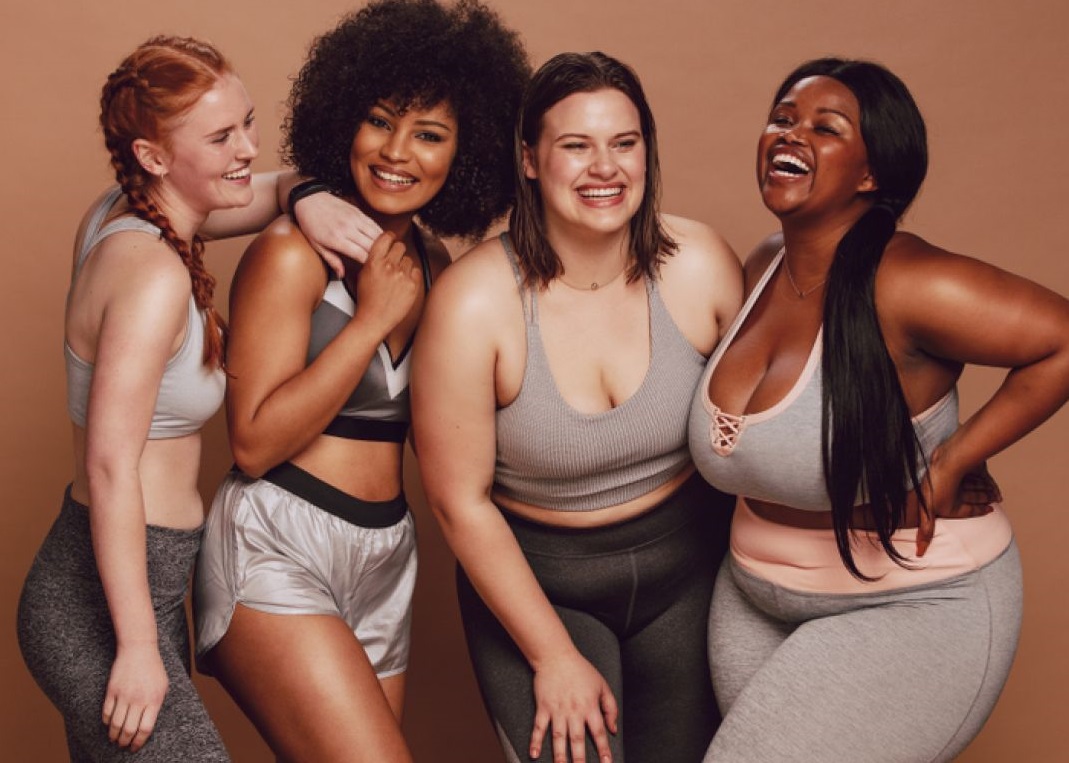 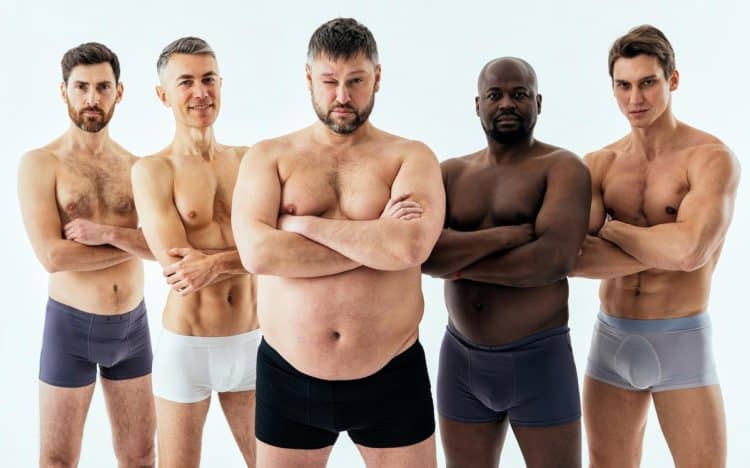
The Guide: Gay Bodies and Expressions
Why We Need Queer Fat
Representation: We Are Worth Taking Up
Space
Sam Smith Unapologetically Speaks on
Body Dysmorphia Amidst Recent Fat
Shaming
Comments About Sam Smith's Sequined
Jumpsuit Show Body Shaming Is Still an
Unfortunate Reality
Lizzo on Body-Shaming Comments on Social
Media
If Sam Smith Was Thin, Cis And Straight,
They Wouldn’t Be Ridiculed
Sam Smith Opens Up About Overcoming Body
Dysmorphia
Addressing shame associated with body
image requires a multifaceted approach.
Education is key to understanding that
everyone has imperfections, and that is
perfectly normal. Increasing awareness
about the detrimental effects of
unrealistic beauty standards can help
combat shame and empower individuals to
challenge these unrealistic norms.
Furthermore, promoting open discussions
about body image, self-acceptance, and
mental health can create supportive
environments that encourage
vulnerability and foster
self-compassion. Therapeutic
interventions, such as
cognitive-behavioral therapy (CBT), can
also be effective in challenging
negative thought patterns and developing
healthier perceptions of one's body.
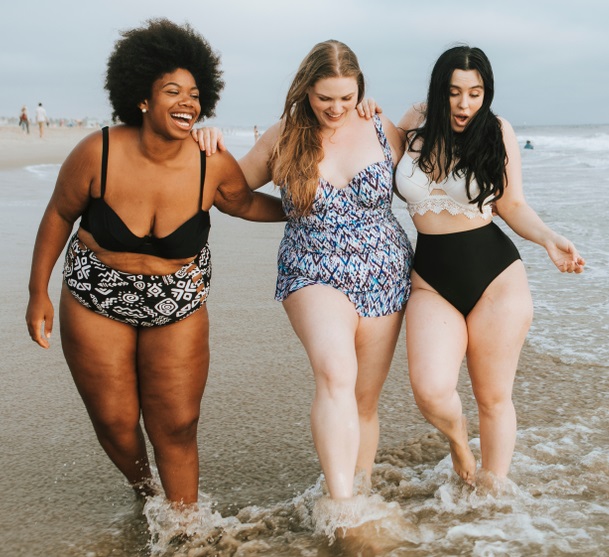
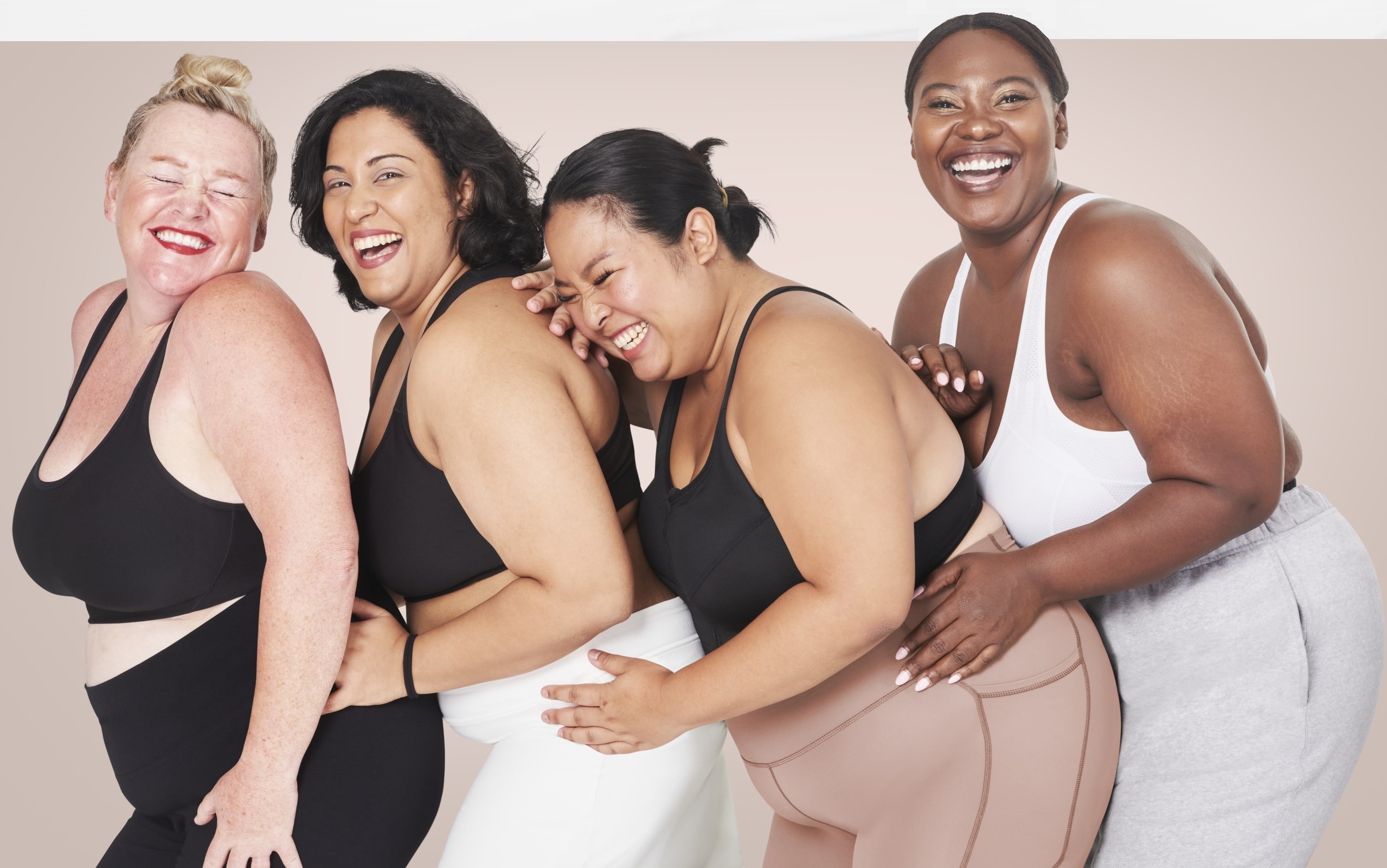
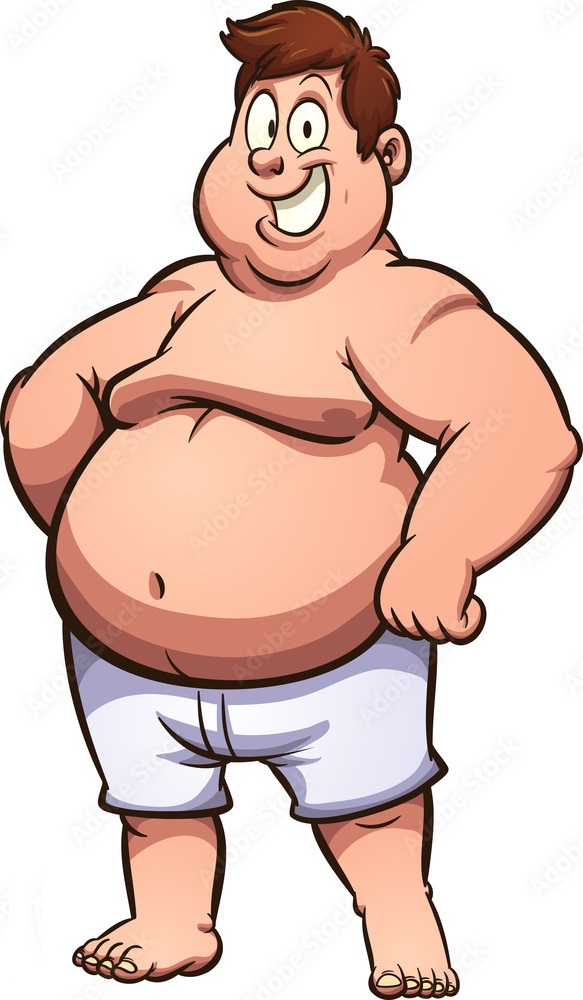
The connection between body image and
shame is a complex and pervasive issue
that affects countless individuals. The
negative influence of societal beauty
standards and media representations has
contributed to the development of
unrealistic body ideals, leading to
feelings of shame when one fails to meet
these standards. By promoting body
diversity, acceptance, and positive
self-image, we can combat shame and
create a society where individuals can
embrace their bodies with love,
compassion, and acceptance. It is
crucial to continue working towards a
world that values individuals for their
unique qualities and contributions,
rather than their appearance, thus
fostering a healthier and more inclusive
society for all.
Sam Smith Photo Incited a Body-Shaming
Debate on Gay Twitter
Study Proves Gay Men Fat Shame One
Another
Queer Body
Collective
Men in the Mirror: A Closer Look at Body
Image
Men and Women:
Comments About Their Body
Grindr Users Share Their Experiences of
Body Shaming
Don't Let Body Shame Keep You From
Celebrating Pride
The Ideal Woman’s Body, According To
Science
Negative Comments About Your Body
Belly Kisses by Rachel Wiley
Things Like This: Gay Romance and Body Type
Everyone deserves love no matter size or sexuality...
Max Talisman — director, writer, and star of Things Like This — talks about queering the rom-com and making the genre inclusive of different body types. He is a filmmaker determined to carve out space for stories that feel as raw and real as the streets of New York City where he shot his first feature. Talisman wears many hats for Things Like This, his debut film that refuses to fit neatly into the boxes of romantic fantasy or predictable queer tropes.
The film follows two men, both named Zack, whose unexpected connection forces them to navigate the long-term emotional aftermath of growing up queer. It’s a romance, but not the glossy, idealized kind. Instead, Things Like This leans into the messy, vulnerable, and sometimes painful truth of forging intimacy while carrying the scars of the past. The film also eschews traditional rom-com tropes by portraying a full, dynamic romantic relationship between a fat man (Talisman) and a thinner man (Joey Pollari).
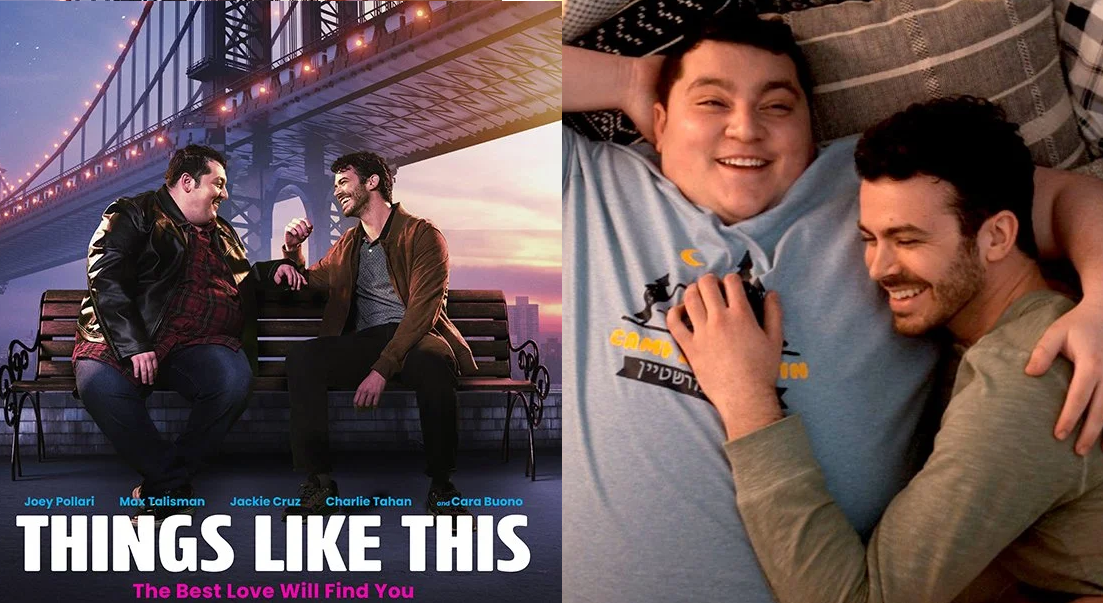
Things Like This: Movie Trailer
Things Like This: Everyone Deserves Love No Matter Size or Sexuality
Shot entirely in New York City over just 18 days, the project is the first release from Talisman’s own production company. He not only directed and produced the film but also stars in it, shouldering the creative and logistical weight to ensure the story stayed grounded in authenticity rather than falling into cliché.
Talisman began writing the script in 2017, after nearly a decade working in film and television and realizing how rarely someone like him, a queer man, was allowed to exist at the center of the frame. With Things Like This, he’s determined to change that narrative.

Talisman was interviewed about the tone and inspiration behind the project, and what he hopes queer audiences will learn from the film...
There’s a sense of trying to flirt with someone but not totally knowing they are queer. Is this a vibe and are we catching this together? I think we see it in the struggles of the characters accepting themselves both as queer people and as adults. I just thought when writing it, like, I screw up all the time. We're messy and we are growing all the time.
I think most of the rom-com stories are straight films from the ’90s in the early 2000s that really created the rom-com genre. As a queer person, I had to find myself in it. My goal with this film was to create something that felt nostalgic and felt wonderful to exist in the world with these characters. I wanted straight people to be able to find themselves within the lens of these two gay men, but they can also relate to these experiences. I think the films that informed me the most are movies like Sleepless in Seattle, When Harry Met Sally, Notting Hill, Bridget Jones's Diary — like all of those quintessential films.
I think it's important for us as queer people to be reinventing the rom-com genre because these are the questions we are asked. What was most important was telling this from a size perspective, and also making it clear that everyone deserves love no matter who you are. You deserve to feel like you are valid in that search for love.... Moving forward, I want to explore so many things as a writer. I think because my lens is that of a queer man, that's where it will always start. There’s a lot of different aspects in this world right now that I think are important to explore.
[Source: Ty Cole, Out Magazine, July 2025]
Physical Fitness vs. Body Shaming
Sam Smith Talks About Their Struggle With Body Weight
Why We Need Queer Fat
Representation: We Are Worth Taking Up
Space
All About Body Image: How
Psychologists Define It and How It
Affects Health and Well-Being
Fatphobia is Alive and Rampant in the
Gay Male Community
Jameela Jamil Defends Sam Smith After
the Singer was Body-Shamed
Body Image, Sexual Orientation, and
Gender Identity
The Guide: Gay Bodies and Expressions
Secrets by Mary Lambert
Lauren Chan: First Out Lesbian on the Cover of Sports Illustrated Swimsuit Issue
First Out Asian Plus-Size Lesbian on the Cover of Sports Illustrated Swimsuit Issue...
Model Lauren Chan is being celebrated as the first out lesbian to appear solo on the cover of the Sports Illustrated annual swimsuit edition. She is also the first such cover star to be Asian and plus-size.
The model appears on the front of the magazine due out in May 2025. She is one of four cover stars, the others being actor Salma Hayek, gymnast Jordan Chiles and influencer Livvy Dunne.
 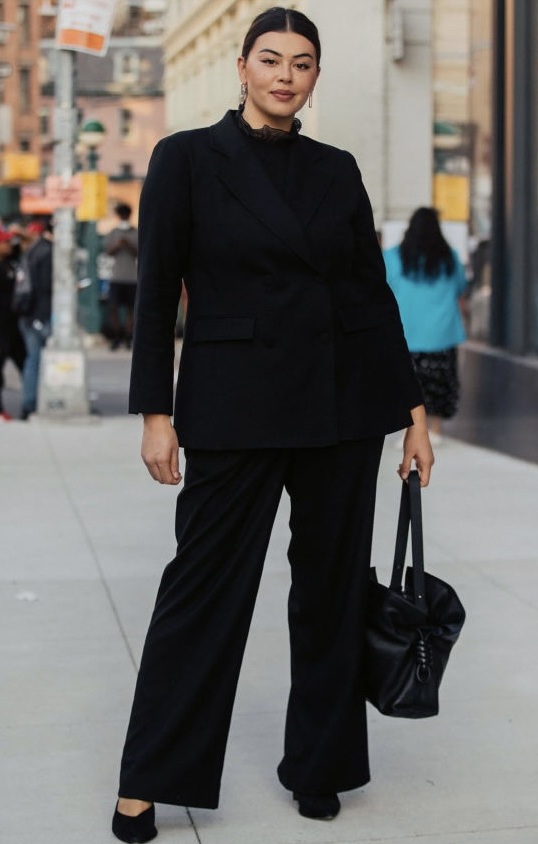 
Model Lauren Chan is the First Out Lesbian to Appear Solo on a Sports Illustrated Swimsuit Cover
Lauren Chan Makes History as the First Out Lesbian on the Cover of Sports Illustrated Swimsuit Issue
Sports Illustrated Swimsuit Issue Welcomes its First Out Lesbian Cover Star
Chan made her Sports Illustrated debut in 2023, becoming the first queer plus-size model to appear in the magazine.
Speaking after her new cover-shot was unveiled, she said: “My whole career has been based on representation and inclusion, first for folks of size with my time as a plus-size model and fashion editor and plus-size brand founder,” a reference to her clothing brand, Henning.
“Then, once I started my journey with swimsuit, it has become a lot about LGBTQ folks and the Asian American and Pacific Islander community, because I believe I’m also the first Chinese person on the cover of swimsuit.
“So, although my career has taken different forms, the same North Star has been followed, and that is to represent people like me who have felt marginalized and left out, to have them feel not just included but celebrated.”
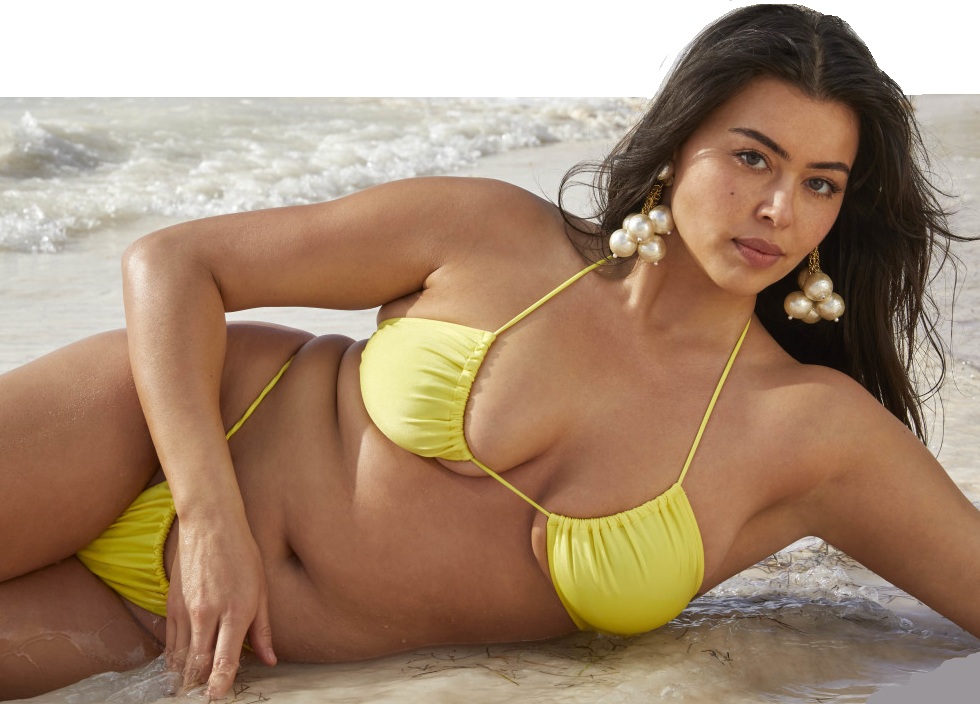 
Chan appears on the cover in a green bikini by the plus-size inclusive brand, Cult Gaia. Inside, she is seen wearing mostly white swimsuits, which she said had a “bridal feel” – a nod to her engagement to film director Hayley Kosan.
Chan came out publicly as a lesbian in 2023, after divorcing her husband. At the time, she wrote in she said: “Because I identified as straight until recently, most people I’ve privately come out to have been surprised at this change in my sexuality. First and foremost: me.”
Model Lauren Chan is the First Out Lesbian to Appear Solo on a Sports Illustrated Swimsuit Cover
Lauren Chan Makes History as the First Out Lesbian on the Cover of Sports Illustrated Swimsuit Issue
Sports Illustrated Swimsuit Issue Welcomes its First Out Lesbian Cover Star
Sam Smith Opens
Up About Overcoming Body Dysmorphia
"My queerness was something I could handle and have a grasp on...
But my weight was the hardest thing."
-Sam Smith
Sam Smith has been on quite the journey.
Alongside their music career, the singer
has been on a quest of self-discovery,
leading them to feel happier and more
fulfilled than ever before. Since coming
out as nonbinary in 2019 and announcing
their change of pronouns, the "Unholy"
singer has overcome body dysmorphia and
finally feels comfortable in their skin.
"My mum says that, as I've got older,
I've stopped caring what people think as
much. She tends to be right," they told
The Sunday Times in a January 2022
interview. Smith has come such a long
way. Where once, they would struggle to
take their top off at the swimming pool
and dealt with body-image issues in
school, they now appear topless on the
cover of their latest album, "Gloria,"
and star in the video of their new track
"I'm Not Here to Make Friends" wearing a
corset, bejeweled pants, and nipple
pasties.
"Within my industry there is definitely
that question of, 'What should a pop
star look like?" they said. "When I was
25 I came off tour exhausted. I looked
to role models in the body world. Every
time I went to the pool I felt
self-conscious, but I forced myself to
take my top off. It paid off because I
now have the opposite of body dysmorphia.
I look fabulous. I'm finally getting a
tan. I'm burnt in places I've never been
burnt."
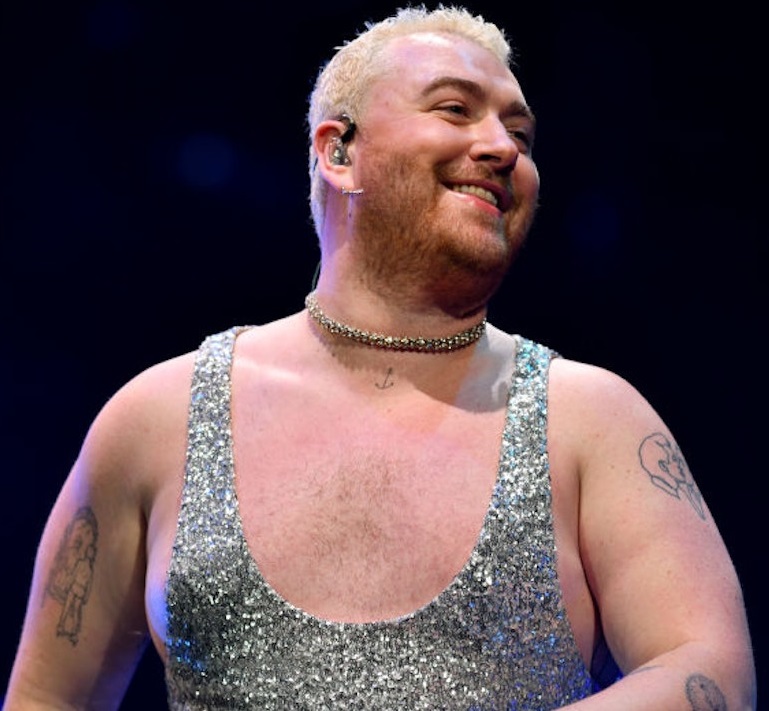
Sam Smith Talks About Their Struggle With Body Weight
Sam Smith Unapologetically Speaks on
Body Dysmorphia Amidst Recent Fat
Shaming
Comments About Sam Smith's Sequined
Jumpsuit Show Body Shaming Is Still an
Unfortunate Reality
If Sam Smith Was Thin, Cis And Straight,
They Wouldn’t Be Ridiculed
Sam Smith Opens Up About Overcoming Body
Dysmorphia
Jameela Jamil Defends Sam Smith After
the Singer was Body-Shamed
Sam Smith Photo Incited a Body-Shaming
Debate on Gay Twitter
According to the National Health Service
of England, body dysmorphia is "a mental
health condition where a person spends a
lot of time worrying about flaws in
their appearance. These flaws are often
unnoticeable to others." Therapy,
support groups, or antidepressants are
often suggested to help those with the
condition.
Smith has previously spoken of their
image struggles, telling The Times in
2020: "For me, what triggered everything
was the work I was doing with my body
issues. I always had body dysmorphia. As
I started to address that, I started to
address my gender and realized that I
was holding myself to these ideals of
how a man should look." Smith sought
therapy and credits it with making them
realize there were many layers to their
feelings. "I have girl thighs and I have
girl breasts too. It started to awaken
this conversation that had always been
in the back of my mind."
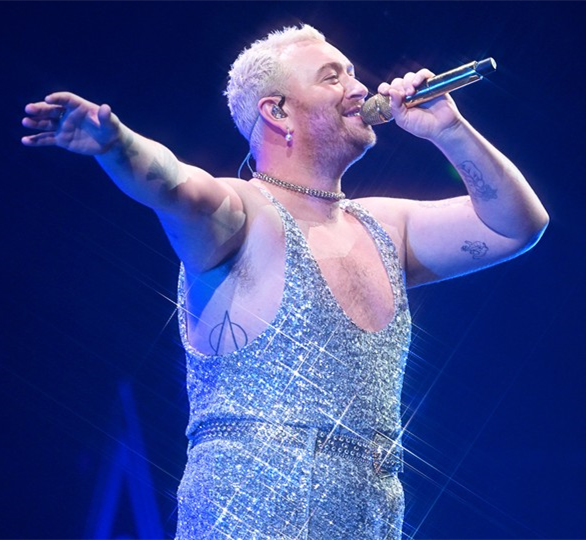
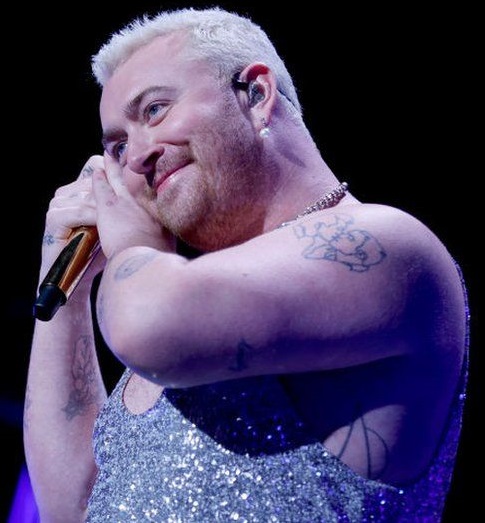
The LGBTQ Body Image Problem
The Guide: Gay Bodies and Expressions
Men and Women:
Comments About Their Body
How Body Shaming and Body Dysmorphia
Affect the Gay Community
Belly Kisses by Rachel Wiley
At New York’s Fat Queer Beach Day, Everyone Is Hot
Queer Body Collective
Why We Need Queer Fat
Representation: We Are Worth Taking Up
Space
Ways to Deal with Body Shaming
Why Body Image Issues Pervade the Gay
Community
Fatphobia is Alive and Rampant in the
Gay Male Community
Body Image, Sexual Orientation, and
Gender Identity
Study Proves Gay Men Fat Shame One
Another
Negative Comments About Your Body
While Smith has learned to love their
body, they are still faced with cruel
comments from others online. Most
recently, they wore a fabulous sequined
Valentino jumpsuit to the Capital Jingle
Bell Ball in December 2022, a similar
getup to Harry Styles's onstage looks.
Yet while Styles was met with praise,
Smith was met with abusive body-shaming
comments. "All I can say is that I
looked fabulous," they said, laughing.
With the 2023 Brits Awards on the
horizon, Smith added their
disappointment at the lack of inclusion
at the award show. After campaigning for
gender-neutral categories, the Brits
changed its awards in 2022, but it has
faced criticism this year for failing to
nominate a single woman in the artist of
the year category. "It is a shame,"
Smith agreed in the most recent
interview with The Sunday Times. "Things
are moving forward, but it's obvious
it's not there yet. From seeing that
best artist list, there is still a long
way to go."
As Smith prepares to perform at the
Brits and the Grammys, it's clear they
feel more authentic, confident, and
powerful in their body. "Writing sad
songs used to be easy, while leaning
into joy was tough. I'm happier in my
own skin on Gloria. I feel liberated,
released from pressures I felt when I
was young," the 30-year-old explained.
Yet they are keen to point out that
self-discovery never stops. "I get
closer to who I am with each album," the
singer said. "But I never want to get
there." For our sake, we hope there are
many more Smith eras to come.
[Source: Joely Chilcott, Pop Sugar,
February 2023]
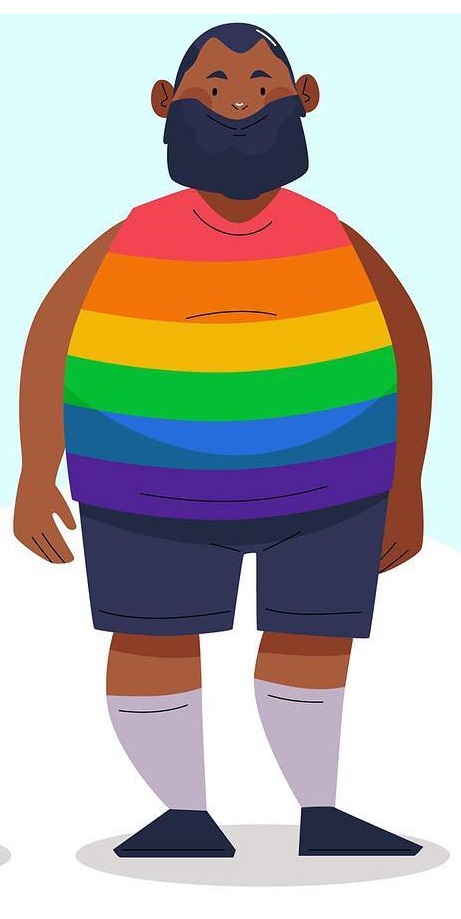
The LGBTQ Body Image Problem
Queen: Fat Bottomed Girls
Sam Smith Talks About Their Struggle With Body Weight
The Ideal Woman’s Body, According To
Science
Secrets by Mary Lambert
At New York’s Fat Queer Beach Day, Everyone Is Hot
How Body Shaming and Body Dysmorphia
Affect the Gay Community
All About Body Image: How
Psychologists Define It and How It
Affects Health and Well-Being
Sam Smith Unapologetically Speaks on
Body Dysmorphia Amidst Recent Fat
Shaming
Comments About Sam Smith's Sequined
Jumpsuit Show Body Shaming Is Still an
Unfortunate Reality
Study
That Proves Gay Men Fat Shame One
Another
If you self-identify as a gay, bisexual
and/or otherwise queer man, you've
probably experienced, witnessed or
perpetrated some form of fat shaming. A
recent study in Psychology of Sexual
Orientation and Gender Diversity refers
to this as the more scientific-sounding
"anti-fat bias."
A report entitled, "Fat Chance!
Experiences and Expectations of Anti-fat
Bias in the Gay Male Community," used
two studies to explore just how anti-fat
gay men are, because simply logging into
Grindr doesn't carry quite the same
professional heft.
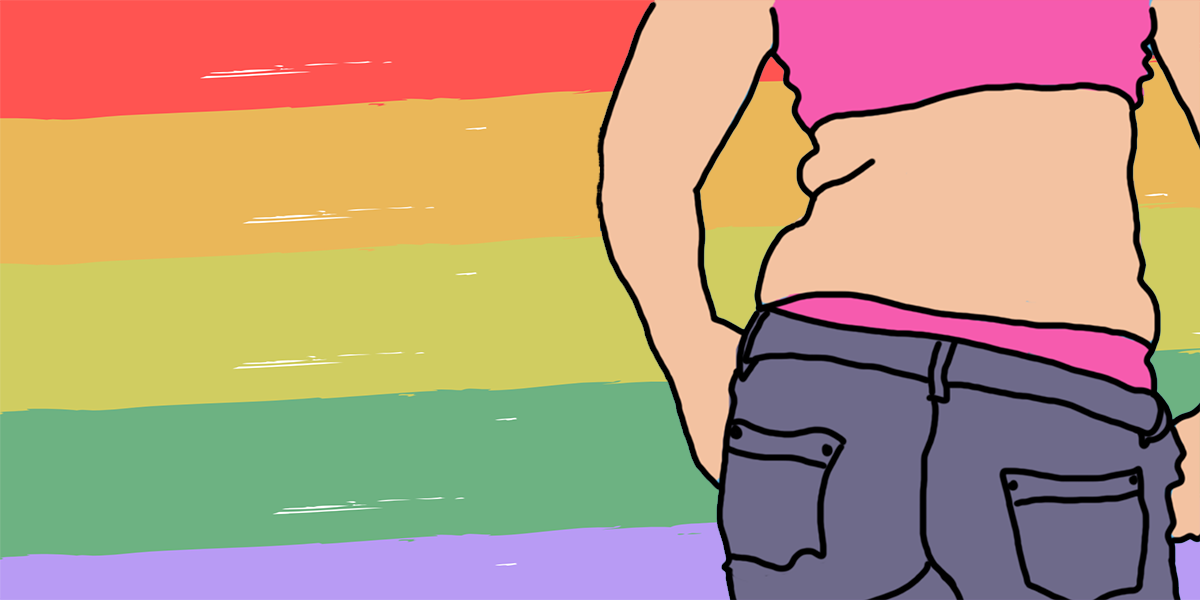
The first study found that out of 215
gay men, age 18 to 78, over one third of
them had directly experienced anti-fat
bias, even though most of them were not
overweight using common body mass index
guidelines. These men also reported that
the most common form of anti-fat bias
they received was from potential
romantic partners, which was associated
with several types of body image
disturbance.
The second study compared the
expectations of anti-fat bias among gay
and straight college men. These 'mos and
bros rated the likelihood of certain
outcomes if they saw an overweight man
hit on an attractive target. Basically,
if they saw a fat guy hitting on someone
out of his league, what would they
expect to happen?
Gay men reported greater likelihood that
the overweight man would be blatantly
ignored, treated rudely, or mocked
behind his back if he approached an
attractive potential romantic partner.
The shade of it all. So not only do gay
men face anti-fat bias, regardless of
actual weight, we also expect our peers
to exhibit the same kind of behavior in
our pursuit of love, or what have you.
The results aren't surprising, which is
perhaps the worst part of this study. It
only confirms what so many of us have
experienced and further illustrates a
problem that it seems has plagued gay
men for as long as anything resembling a
gay community has existed. A problem
that is exacerbated by the media and
perpetuated by hookup culture.
Amy Schumer Talks Fat-Shaming, Hits Back
at Body Critics
Jameela Jamil Defends Sam Smith After
the Singer was Body-Shamed
Sam Smith Photo Incited a Body-Shaming
Debate on Gay Twitter
Ariel Winter Responds to Body-Shaming
Comments on Instagram
Lizzo Addresses Fat-Shaming Comments
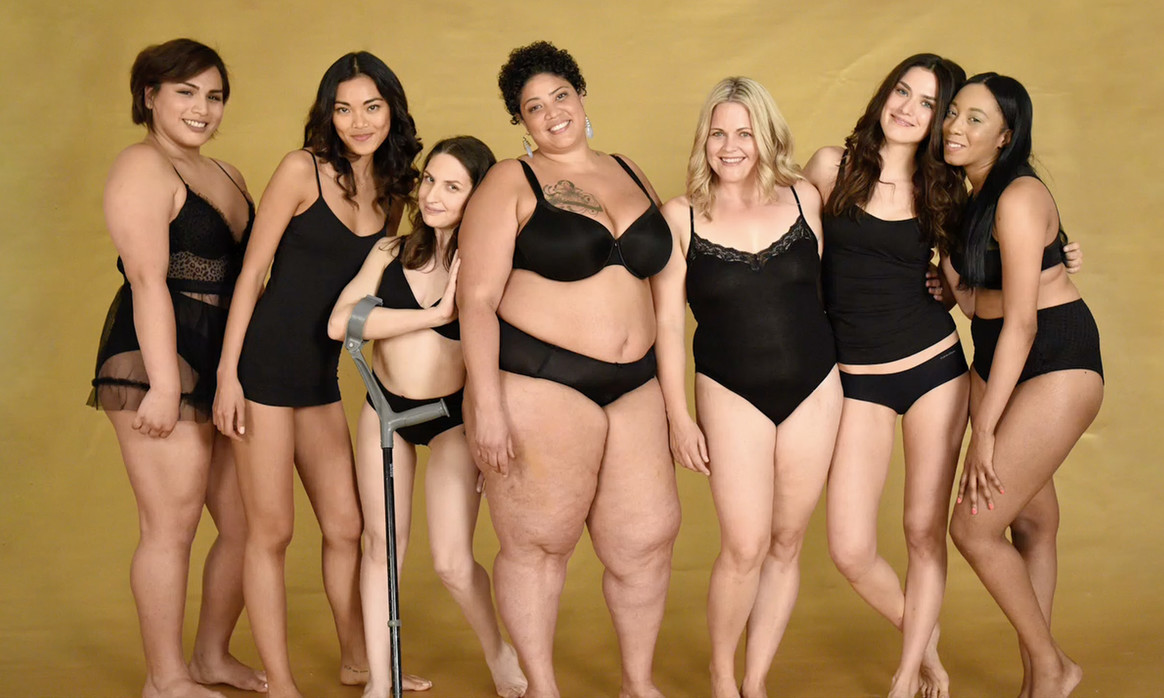
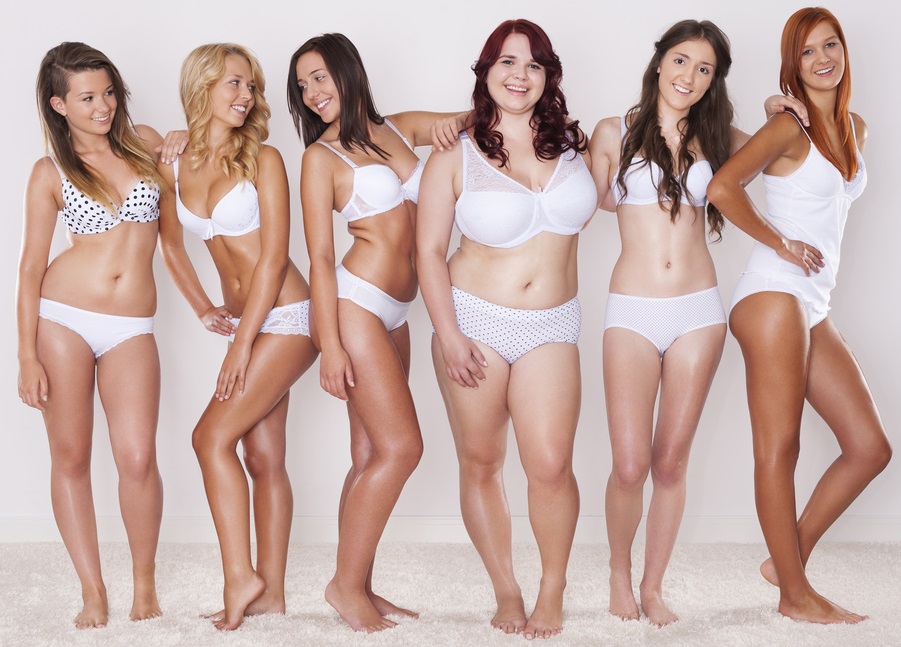
There's no simple solution to fixing
generations of this anti-fat bias. The
idolization of the male body has always
been part and parcel of gay culture. But
that's why we have bears. And otters and
cubs. And others in this sexual
menagerie that reject and subvert the
idea of the ideal body.
One simple solution we can all do,
however, is to stop broadcasting
ignorance and prejudice, like, if you're
filling out a dating profile maybe, I
dunno, leave out the "no fats, femmes"
bullshit. Just a thought. Oh, and don't
fuck with others who use that kind of
language. You know, gay it forward, be
the change you want to see in the world.
[Source: Les Fabian Brathwaite, Out
Magazine, Feb 2016]
The LGBTQ Body Image Problem
The Guide: Gay Bodies and Expressions
How Body Shaming and Body Dysmorphia
Affect the Gay Community
Sam Smith Unapologetically Speaks on
Body Dysmorphia Amidst Recent Fat
Shaming
Queen: Fat Bottomed Girls
At New York’s Fat Queer Beach Day, Everyone Is Hot
Queer Body Collective
Comments About Sam Smith's Sequined
Jumpsuit Show Body Shaming Is Still an
Unfortunate Reality
Ways to Deal with Body Shaming
Sam Smith Opens Up About Overcoming Body
Dysmorphia
Why Body Image Issues Pervade the Gay
Community
For Shame, Body Shamers!
Why We Need Queer Fat
Representation: We Are Worth Taking Up
Space
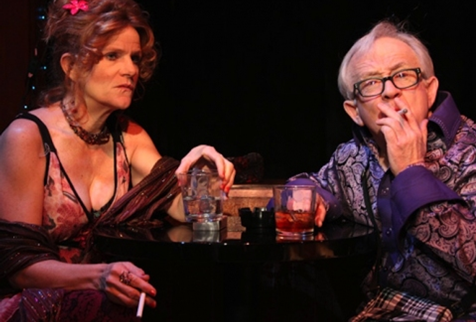
I Was Feeling So Good About Myself
Peanut and Odette sitting at the bar talking...
Peanut: Back in my twenties, when I first started going out to the bars, I remember I went out and bought me an ensemble. I looked amazing. I had on tight black jeans, black cowboy boots with big heels, and a black fringe leather jacket. I walk in this this bar down the street called Moby Dick's. And I was feeling so good about myself. There were two evil queens leaning up against the bar there. One of them pokes the other one and says, "Oh look Mary, there's one for you!" Then they burst out laughing.
Odette: Well that's just so mean.
Peanut: I went home, I threw out that entire outfit and I started paying for sex.
Odette: You did not!
Peanut: I did, and I do. That way... I can never be rejected. It's all about bodies and looks in this little gay world of ours. I mean look at me. I'm just a short, weird guy, big ears. I got hair on my back. Honey, that's the gay cardinal sin. And now you can add old to my list of sins.
[Source: Southern Baptist Sissies, Play by Del Shores]
The LGBTQ Body Image Problem
Queen: Fat Bottomed Girls
Sam Smith Talks About Their Struggle With Body Weight
The Ideal Woman’s Body, According To
Science
Men and Women:
Comments About Their Body
Secrets by Mary Lambert
How Body Shaming and Body Dysmorphia
Affect the Gay Community
All About Body Image: How
Psychologists Define It and How It
Affects Health and Well-Being
Sam Smith Unapologetically Speaks on
Body Dysmorphia Amidst Recent Fat
Shaming
Comments About Sam Smith's Sequined
Jumpsuit Show Body Shaming Is Still an
Unfortunate Reality
Ways to Deal with Body Shaming
Men in the Mirror: A Closer Look at Body
Image
Sam Smith Opens Up About Overcoming Body
Dysmorphia
Why Body Image Issues Pervade the Gay
Community
For Shame, Body Shamers!
No Fats, No Fems: Everything That's
Wrong With the Gay Community
We Need Queer
Fat Representation
Author Christen Randall talks about writing the book she needed as a teenager
As a fat, bisexual teen, sharing my body
with a girl made me anxious. Boys, after
all, were so critical of it. They
speculated about the size of my nipples
(pepperoni, probably) or shape of my
butt (like a frog’s), followed behind me
in gym making sound effects for my
jiggling thighs. Poking and prodding in
front of the mirror, I convinced myself
someone who had actual knowledge of
those parts would be even more aware of
how critically flawed mine were.
I found no counters to the argument that
played over and over in my head in the
early 2000’s queer media I consumed.
What little I had access to featured
slim, fashionable twenty-somethings who
lived in big cities, led scandalous
lives. I can’t remember a single queer
fat person in any of the shows I watched
or books I read. The ones that did have
(cisgender, straight) fat characters
cast them as support or, more
insidiously, the “problem” lead who got
skinny to get the guy.

Because I couldn’t imagine myself
fitting into the world where I lived or
the stories where I escaped, I concluded
it was simply too much to be both queer
and fat at the same time. I was doing
queer wrong. It wasn’t until my
early 30’s that I believed for the first
time that I wasn’t – that it was okay to
love and live in my body as a queer
body. This revolutionary understanding
came with a sorrow for all the time I
wasted fearing it. It came, too, with a
fierce joy.
Sharing that joy is the heart of why I
wrote The No-Girlfriend Rule, my geeky
young adult love letter to fat queers
and the magic that happens when we take
that first brave step into our truth. It
is also – as I have heard so many of my
fellow queer authors echo about our work
– the book I needed as a teenager. If I
had grown up with a character like
Hollis, who is queer and fat and,
ultimately, finds love and acceptance
from her friends and herself, I might
have found those things sooner.
In creating space to root for queer, fat
characters being loved not despite their
bodies but fully embraced within them,
we allow those who look and love like
them to believe they are worth rooting
for, too. Characters like Hollis provide
the self-loving counterargument I needed
for the rising generation – and for the
anxious, queer, fat teens that still
yearn to be seen within so many of us:
we are worth taking up space within our
community exactly as we are.
[Source: Christen Randall, Diva
Magazine, May 2024]
Physical Fitness vs. Body Shaming
The Guide: Gay Bodies and Expressions
Negative Comments About Your Body
At New York’s Fat Queer Beach Day, Everyone Is Hot
Fatphobia is Alive and Rampant in the
Gay Male Community
Jameela Jamil Defends Sam Smith After
the Singer was Body-Shamed
Body Image, Sexual Orientation, and
Gender Identity
All About Body Image: How
Psychologists Define It and How It
Affects Health and Well-Being
Sam Smith Photo Incited a Body-Shaming
Debate on Gay Twitter
At New York’s Fat Queer Beach Day, Everyone Is Hot
At New York’s Fat Queer Beach Day, I chatted with fat queer friends old and new about the beach, queer spaces, and overcoming shame.
What made you decide to organize this event?
I love the beach. Over the course of my life, it’s been a really beautiful place of community-building with chosen family and just being in a space where the only thing you need to do is vibe. I wanted to make an event where my community could come together, especially in a time where I feel like people are very isolated. A lot of community spaces cost a lot of money, and are not accessible, and are not necessarily friendly to people of various identities. A lot of fat spaces are not super queer-focused, not very racially diverse, or not trans-friendly, and so I wanted to make a space during Pride where we could do that.
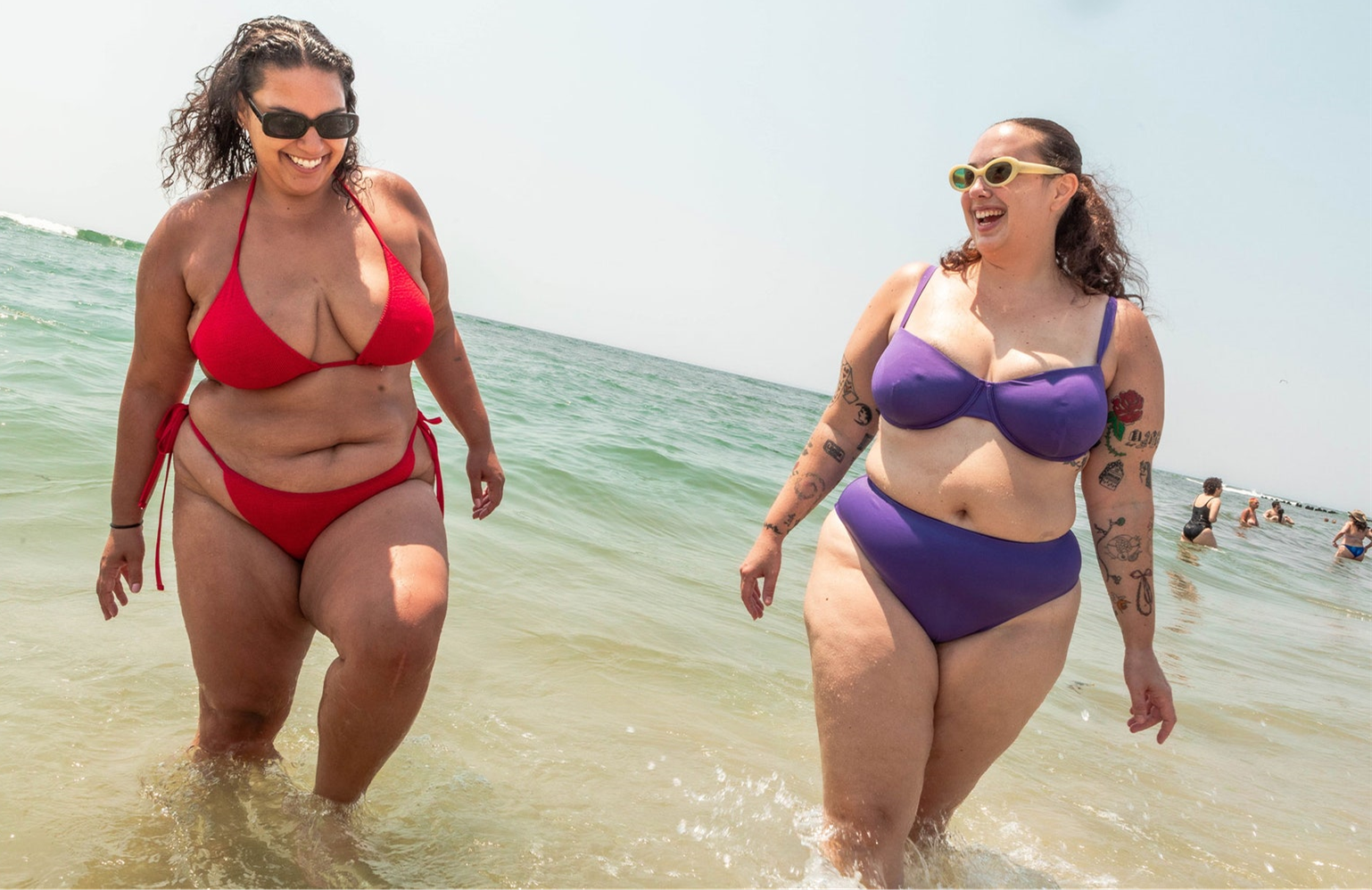 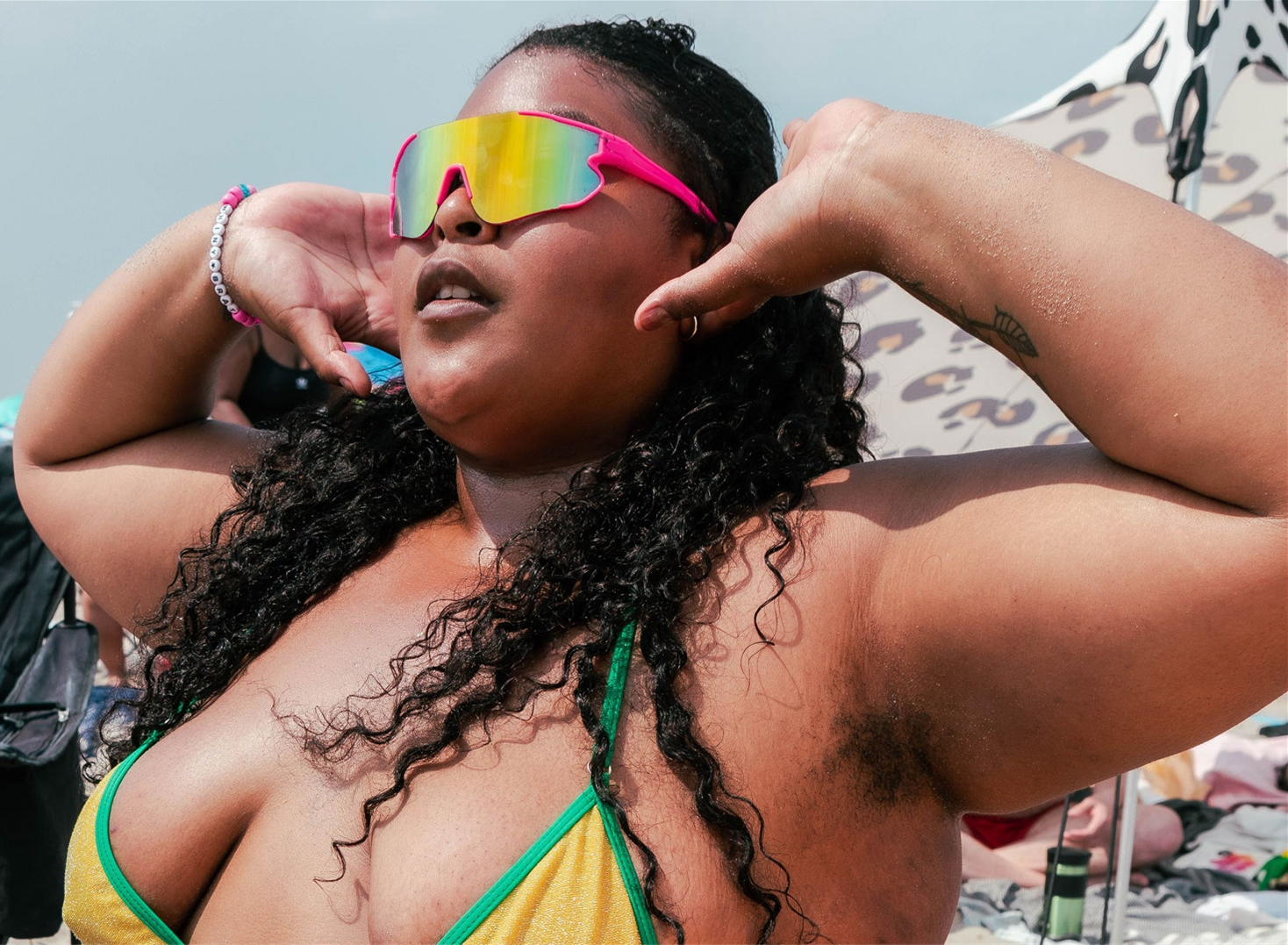
Queer Body Collective
Secrets by Mary Lambert
Study Proves Gay Men Fat Shame One
Another
Grindr Users Share Their Experiences of
Body Shaming
Don't Let Body Shame Keep You From
Celebrating Pride
Men in the Mirror: A Closer Look at Body
Image
The Ideal Woman’s Body, According To
Science
Belly Kisses by Rachel Wiley
Can you talk about the first time that you remember feeling pride over shame?
I think it was actually the first time that I came to Riis. I was with my best friends at the time, and I was around a lot of people that I didn’t know. I didn’t feel stared at. I didn’t feel ostracized by language, vibes, or side eyes. It’s a space where people are free to just be themselves with no expectations or judgments. Being in the community here allowed me to shed whatever was left of that, because community heals, guys. It heals so much.
What do you feel is unique about having a fat queer community?
Honestly, when you’re in community with other fat people, you realize that no one looks the same at all and we can’t really be put in a monolith, but it’s really nice when you see other people with similar body types as you. It makes you feel like there’s someone there who will listen to you if something does happen. And also to share happy moments with you without [it being surface-level], really “look inside” type shit.
When was the first time you chose Pride over shame?
The first [time] that comes to mind is [when] I got invited to a Fat Fashion show. The way I was hooting and hollering, it was one of the first times that I remember really celebrating a fat body. Also, I’m polyamorous, so I’m also involved in ethical non-monogamy and group sex spaces. My first group play party was also really formative for me in terms of [feeling] comfortable in my body, and my sexuality, and my self-expression. That was really powerful.
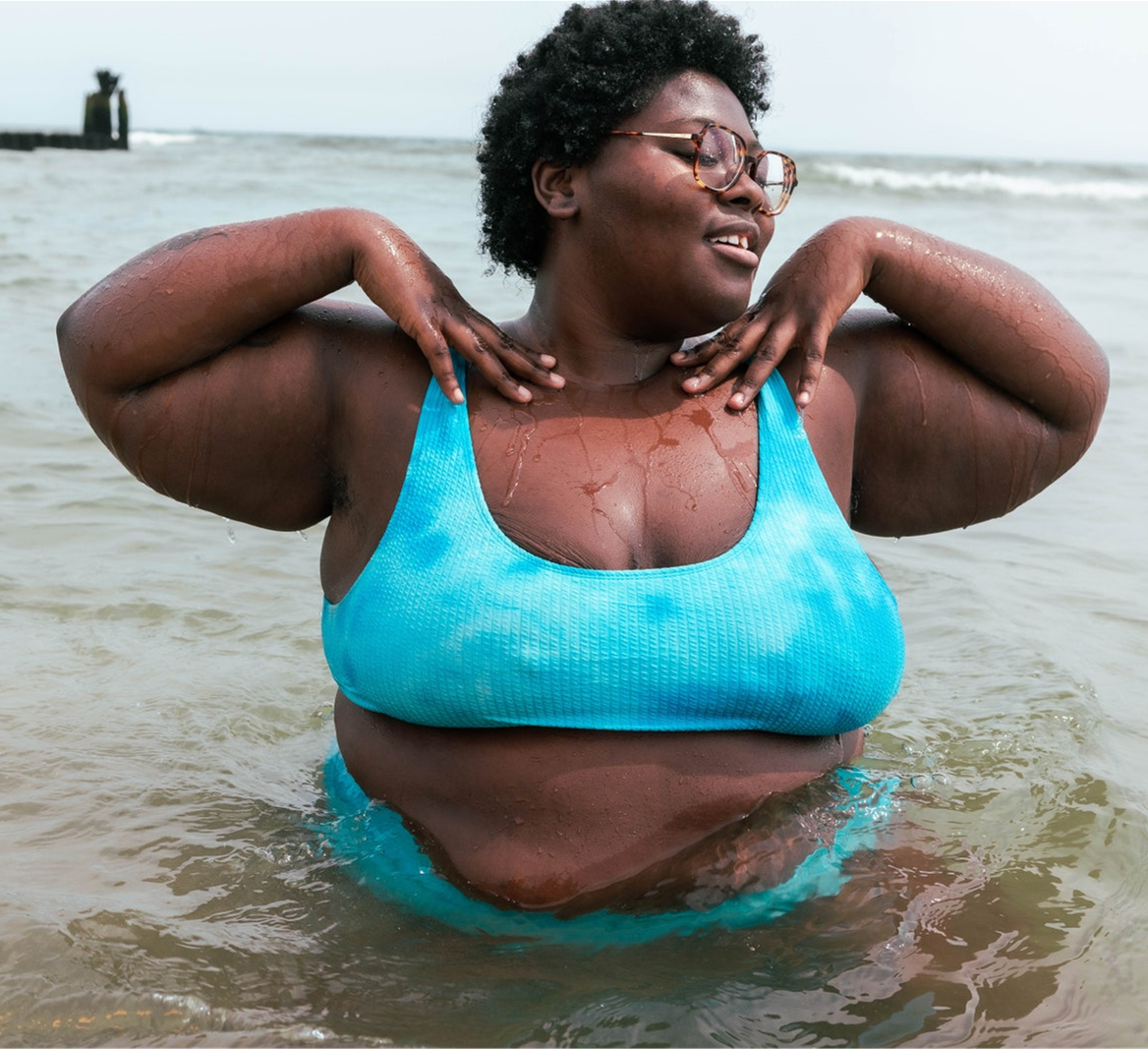 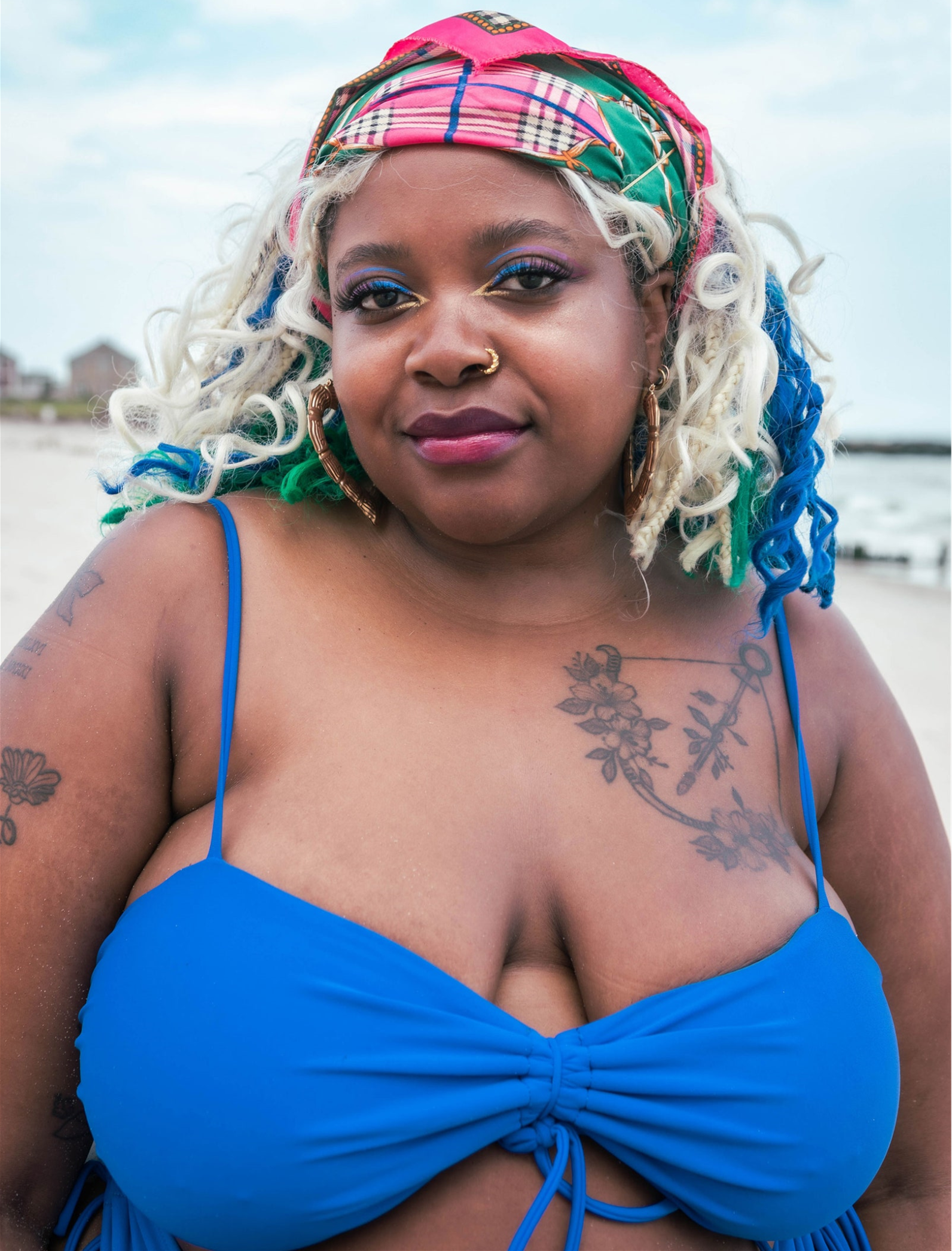 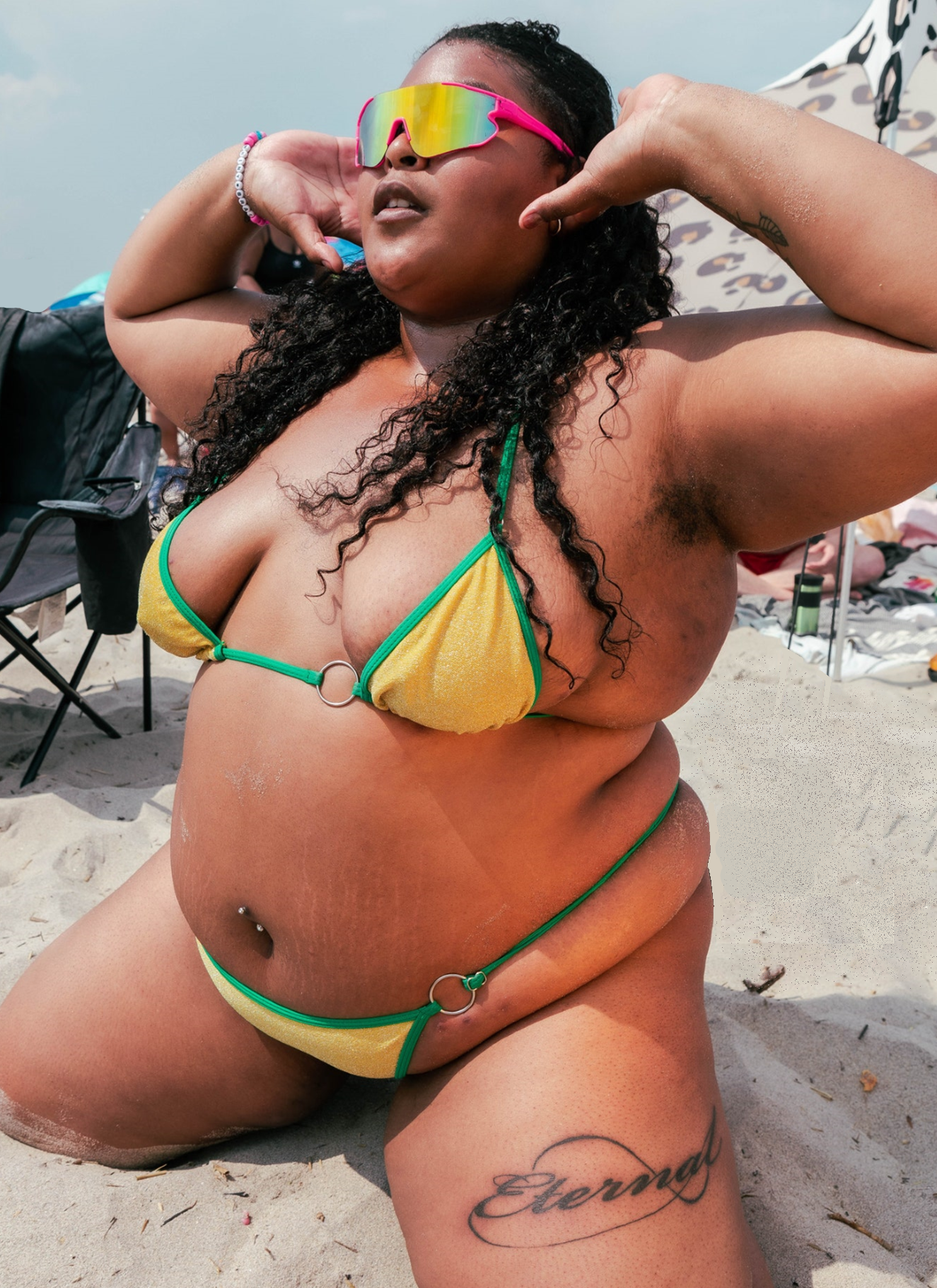
Physical Fitness vs. Body Shaming
At New York’s Fat Queer Beach Day, Everyone Is Hot
Why We Need Queer Fat
Representation: We Are Worth Taking Up
Space
All About Body Image: How
Psychologists Define It and How It
Affects Health and Well-Being
Fatphobia is Alive and Rampant in the
Gay Male Community
Jameela Jamil Defends Sam Smith After
the Singer was Body-Shamed
What does this fat queer beach day mean to you?
I’ve been fat since as long as I can remember. When it came to specifically recognizing that I was queer, I was like, Oh no, you have two bulls against you. You are fat and you’re openly queer and you’re in school — the worst place to be in, where everyone’s learning about themselves [and] judging themselves for being who they are. Today means looking around and being like, No, you were fine all along.
I remember walking in the hallways and being like, Okay, suck in your waist and don’t look at that girl, or whatever. That’s ridiculous. You were supposed to be who you were this entire time and I feel like this day is just commemorative of that, because I know I’m not the only person that went through something like that. Now, we’re already through the bad part. It’s like [this] deep relief, the deep sigh. That’s what today feels like. It’s amazing.
Have you ever felt unwelcome in a queer space?
Last year, around Pride Month, there was a Black queer party. I went to [buy] a ticket, and it was like $50 or $60. I understand it’s Pride Season and everyone’s trying to get it as exclusive as possible so people could be excited to go. But in that moment, I was so deeply uncomfortable because I was with my friend who didn’t have the money to go. And it was already up to $70 at the door, [so we decided to split up.]
I met a couple of people that night. They were all skinny. When we went in, I could tell I was being treated a little differently. I wished I was with my friend. They had a good time at another bar, and I was having a solid time listening to music, but I didn’t feel that it was representative of my community. It made me look forward to Pride in a different way. It made me want to just be around my people. That [night] radicalized me down.
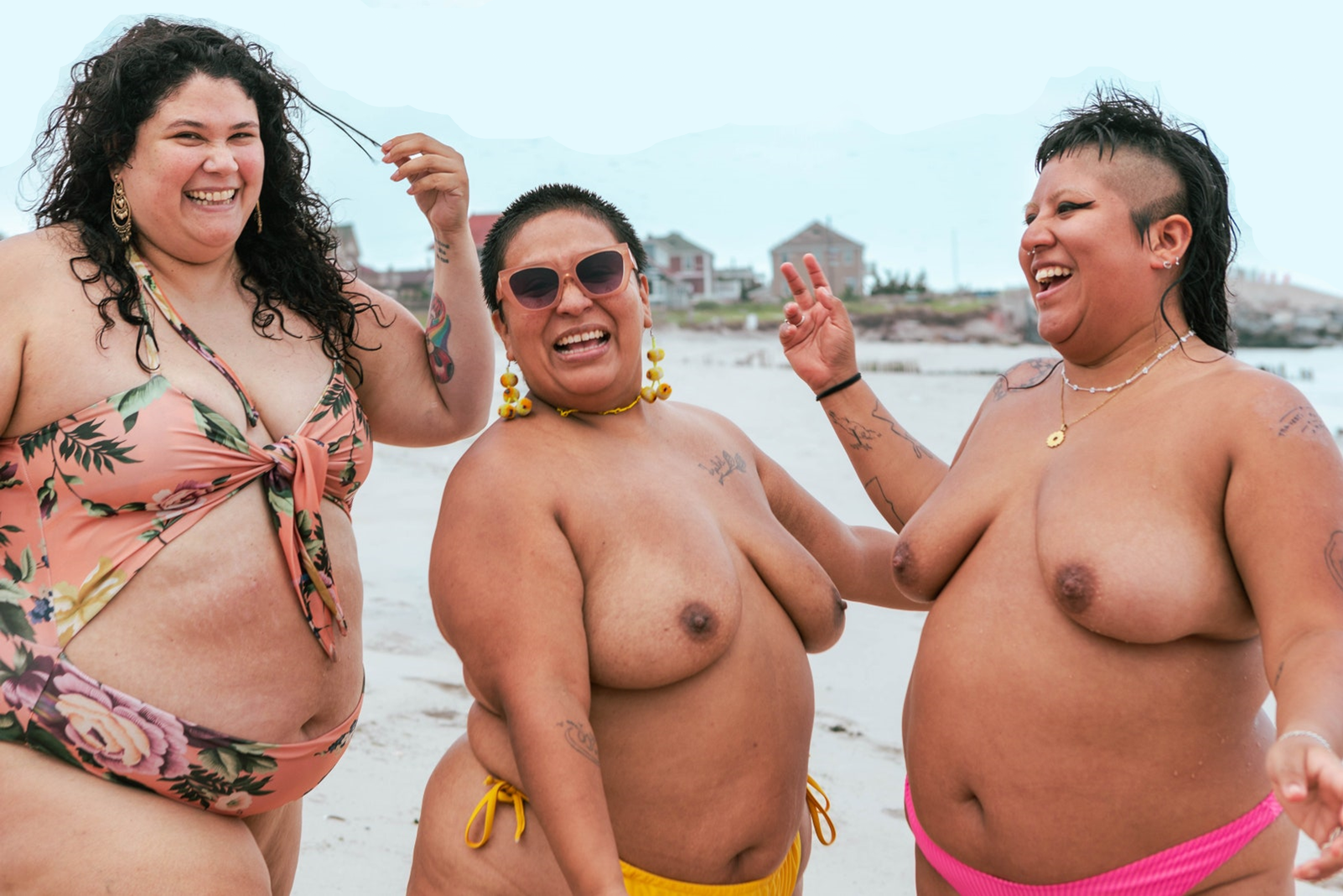 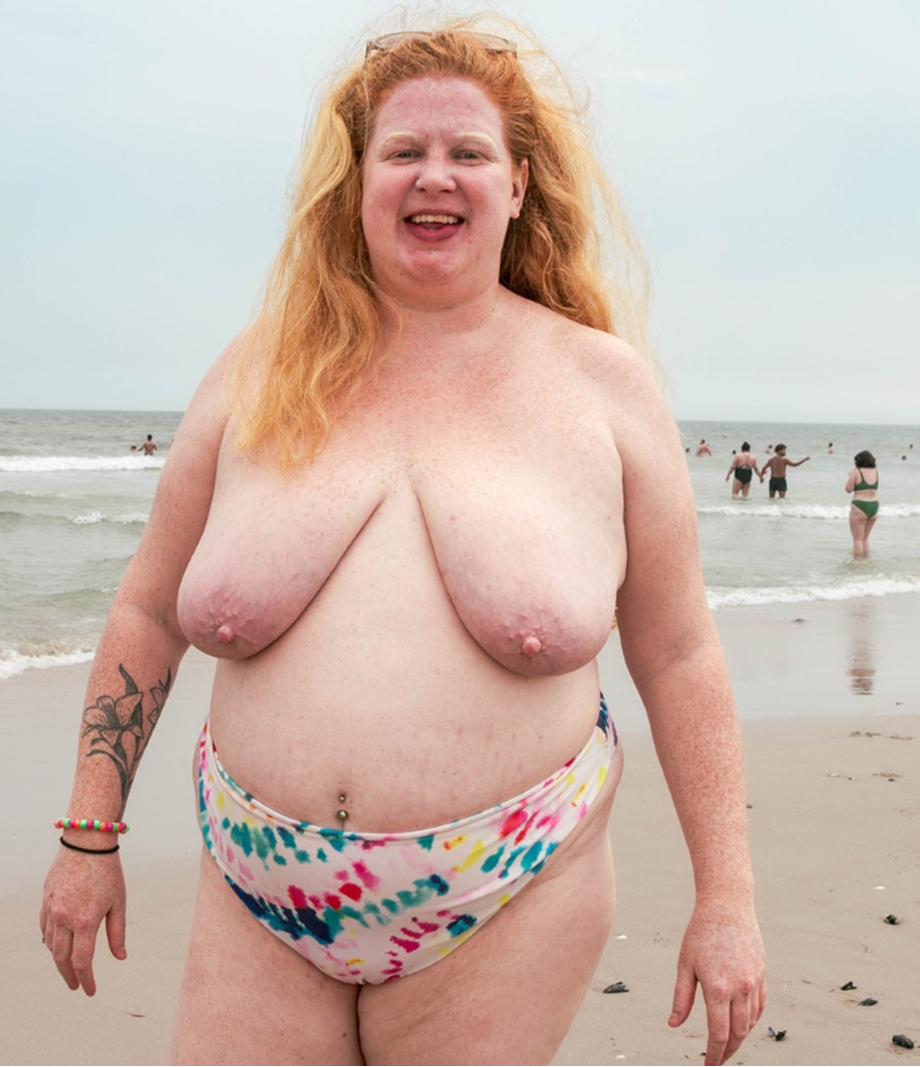
What does this fat queer beach day mean to you?
I truly think it means getting to be your most authentic self around your best friends in the whole world while getting vitamin D after long winters. This is the summer solstice, so it was a perfect time to come out. I think summer’s transformative. A lot of us [are] meeting each other for the first time and a lot of us have trouble meeting each other because it’s hard to be at the same place at the same time, so it’s super cool.
What do you feel is the role of plus-size fashion when it comes to fat acceptance and fat activism?
I mean, if straight-size fashion isn’t doing it, someone’s gotta do it. We have the responsibility to show all different sizes that can wear all these clothes. Everyone’s beautiful and everybody deserves to be seen.
When was the first time you chose Pride over shame?
Honestly, I’m feeling it today. I’m 32 and I have never liked how I looked in a bikini. And today I am like, Wow, I wish my bathing suit was smaller. I want to show myself more. Someone’s been taking pictures and I am not shying away from the camera. I’m like, Yeah, I’m here.
[Source: Catherine Mhloyi, Them, July 2024]
Body Image, Sexual Orientation, and
Gender Identity
Sam Smith Photo Incited a Body-Shaming
Debate on Gay Twitter
Men and Women:
Comments About Their Body
Study Proves Gay Men Fat Shame One
Another
Men in the Mirror: A Closer Look at Body
Image
Grindr Users Share Their Experiences of
Body Shaming
Don't Let Body Shame Keep You From
Celebrating Pride
The Ideal Woman’s Body, According To
Science
Belly Kisses by Rachel Wiley
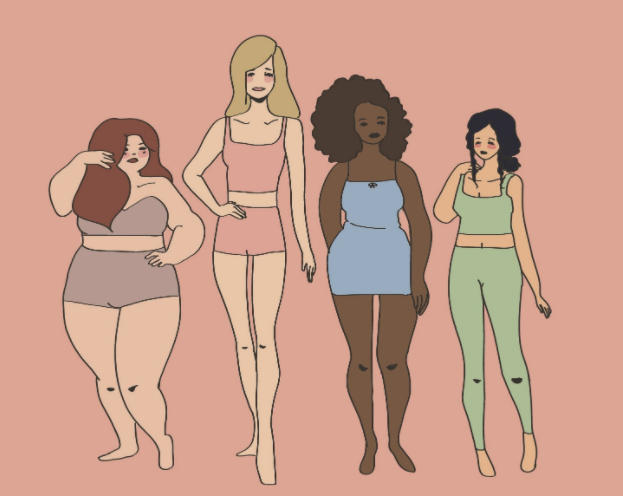
The LGBTQ Body
Image Problem
Beauty
has no size, no skin tone, no hair
color, no eye color, no facial features,
no muscle definition… for we are all
uniquely beautiful and the standards are
unreal.
People in
the LGBTQ community, through the
combination of low self-esteem and
stressful life experiences, are some of
the most at-risk to develop mental
health and eating disorders. Research by
the National Eating Disorders
Association (NEDA) has shown that
teenagers who identified as gay, lesbian
or bisexual may be at higher risk of
binge-eating and purging than
heterosexual peers.
We know about the common stressors that
impact young people who decide to come
out, such as bullying, harassment,
rejection and isolation. With the
emergence of social media though, a new
layer has built up. LGBTQ people are
more likely to suffer from stress and
anxiety because of their body image,
with a particularly worrying proportion
of bisexuals experiencing suicidal
thoughts.
Social media can affect the lives of
young people in many ways. The rupture
of traditional social boundaries and
support circles has intensified and
complicated the daily lives of millions
of young people. This usually means
conjuring up multiple sets of identities
for different audiences, negotiating
online personas by only disclosing the
level of information one is comfortable
with, and a blurred overlap of public
and private life. This phenomenon is
referred to as context collapse: the
process of the construction of a private
self that is revealed to some people and
a public self that is assumed to be
available to anyone, regardless of
context.
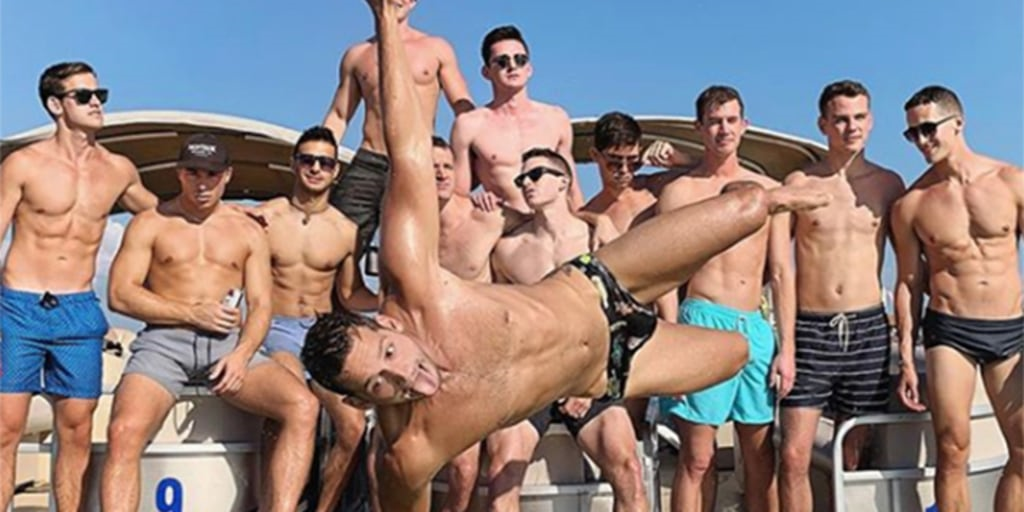
The implications for the LGBTQ
community
A common theme among sexual minority men
is the pressure to present an appearance
of slim and athletic which can have a
negative bearing on their emotional
health and develop eating disorder.
Research by The National Eating
Disorders Association (NEDA) reveals
that gay and bisexual boys report being
significantly more likely to have
fasted, vomited, or taken laxatives or
diet pills to control their weight in
the last 30 days.
The newly-published report from the
Mental Health Foundation refers to the
‘minority stress’ which comes from the
stigma and prejudice encountered by the
LGBTQ community may be “linked to body
image”: “For young men who have sex with
men, one study found that internalized
negative attitudes towards homosexuality
and sexual orientation predicted overall
body dissatisfaction, muscularity
dissatisfaction and body fat
dissatisfaction.”
The most common symptoms range from low
self-esteem to depression and self-harm,
including embarrassment, bad eating
habits and problems sustaining
relationships with other people.
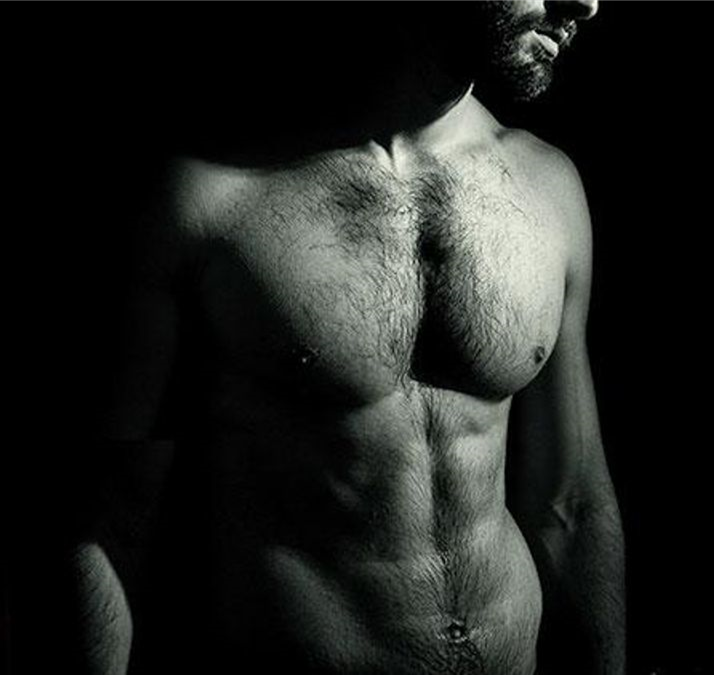
The good news is that the attitudes are
improving and that there is advice and
useful information available online to
learn to improve our relationships with
our bodies via exercises, mindfulness
and new outlooks on life. Here are some
examples of ways you can thing more
positively about your body:
--Acknowledge your body’s faults instead
of ignoring or hiding them, you may even
get to like them
--Appreciate that your body has carried
you all your life and does wonderful
things that most of us fail to notice
--Learn to appreciate different bodies
or types of bodies on social media and
in the media
--Reflect on the moments when you
criticize yourself and decide if this
was worth it or if you could have taken
some positives
--Take interesting pictures of yourself
that show your body is amazing
--Ask friends who have similar body
image issues for advice and pay
attention to other people’s voices when
they congratulate you
--Refrain form a binary approach to
evaluating your own body (and others');
be more flexible than 'attractive' or
'ugly', move away from labels and focus
on features individually
--Learn to consider that good health and
a perfect body are different things
[Source: Turning Point]
The LGBTQ Body Image Problem
Sam Smith Talks About Their Struggle With Body Weight
At New York’s Fat Queer Beach Day, Everyone Is Hot
How Body Shaming and Body Dysmorphia
Affect the Gay Community
Sam Smith Unapologetically Speaks on
Body Dysmorphia Amidst Recent Fat
Shaming
Queen: Fat Bottomed Girls
Comments About Sam Smith's Sequined
Jumpsuit Show Body Shaming Is Still an
Unfortunate Reality
Ways to Deal with Body Shaming
Sam Smith Opens Up About Overcoming Body
Dysmorphia
Why Body Image Issues Pervade the Gay
Community
For Shame, Body Shamers!
Why We Need Queer Fat
Representation: We Are Worth Taking Up
Space
The Guide: Gay Bodies and Expressions
Negative Comments About Your Body
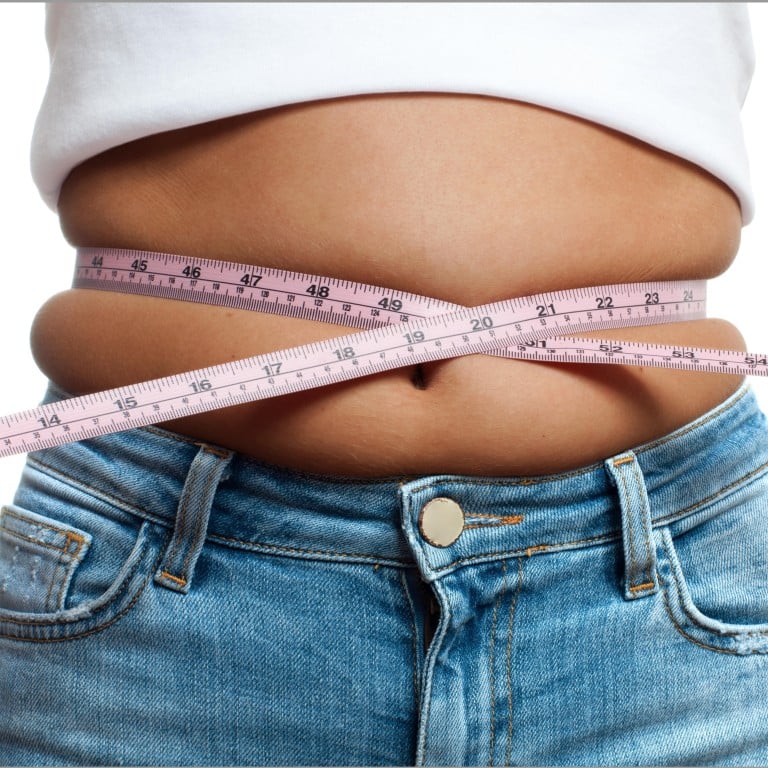
Fatphobia is Alive and Rampant in the
Gay Male Community
Fatphobia and weight stigma are
unfortunately rampant in among gay men,
in which many men experience
fat-shaming, discrimination, harmful
comments, and exclusion, causing a toxic
environment that often ostracizes its
own community members. Fatphobia can
negatively affect a person’s mental and
physical health, increasing their risk
for eating disorders.
What is fatphobia and what are its
consequences?
Fatphobia
is defined as an intense hatred or fear
of people living in larger bodies. It’s
extremely prevalent and insidious,
apparent in a variety of settings, from
healthcare, the work place,
transportation, social gatherings, and
dating.
Fatphobia has far-reaching consequences
for fat people, a term that’s been
reclaimed by those living in
higher-weight bodies. It leads to weight
stigma, weight-based discrimination, and
fat-shaming, as well as a host of other
negative effects, including:
--Body dissatisfaction
--Depression
--Psychological stress
--Poor self-esteem
--Poor body image
--Disordered eating
Fatphobia
is responsible for negative stereotypes
about fat people, as well as the view
that they are unhealthy, and these
attitudes and beliefs can be seen in the
gay and queer men community, causing
many men to feel excluded and
ostracized.

At New York’s Fat Queer Beach Day, Everyone Is Hot
Sam Smith Unapologetically Speaks on
Body Dysmorphia Amidst Recent Fat
Shaming
Comments About Sam Smith's Sequined
Jumpsuit Show Body Shaming Is Still an
Unfortunate Reality
Lizzo on Body-Shaming Comments on Social
Media
If Sam Smith Was Thin, Cis And Straight,
They Wouldn’t Be Ridiculed
Sam Smith Opens Up About Overcoming Body
Dysmorphia
Amy Schumer Talks Fat-Shaming, Hits Back
at Body Critics
Jameela Jamil Defends Sam Smith After
the Singer was Body-Shamed
Sam Smith Photo Incited a Body-Shaming
Debate on Gay Twitter
Ariel Winter Responds to Body-Shaming
Comments on Instagram
Lizzo Addresses Fat-Shaming Comments
Gay men, fatphobia, and toxic
masculinity
Although many gay men want to believe in
the inclusivity of their community, the
sad fact is that gay men can be very
exclusionary, toxic, and fatphobic. Gay
men often deal with immense pressure to
obtain the “ideal” masculine body,
namely, a lean and muscular build, and
that pressure is compounded by hookup
apps like Grindr in which men list their
thinly-veiled prejudices as
“preferences,” such as “no fats” and “no
femmes.”
While fatphobia in the gay men community
is certainly caused by our society’s
harmful attitudes related to body image
and attractiveness, it may also be a
product of toxic masculinity and
misogyny. Many men equate fatness with
femininity, thus “No Fats” and “No
Femmes” often being linked on hookup
apps.
This creates a culture of exclusion for
queer men living in larger or
higher-weight bodies who don’t feel
welcome in their own community, creating
further insecurity, body
dissatisfaction, poor self-esteem, and
feelings of rejection.
One study found that more than 33% of
gay men, most of whom were not
overweight according to BMI standards,
reported experiencing fatphobia. And the
most common type of weight stigma
experienced was rejection from potential
romantic partners due to weight.
A follow-up study on fatphobic attitudes
from potential romantic partners found
that when compared to straight, fat men
approaching women, gay men in
higher-weight bodies were more likely to
be treated rudely, mocked, or blatantly
ignored when approaching men deemed
attractive by societal standards. This
study shows how many gay men experience
negative consequences of fatphobia,
because they may not meet the impossible
standards gay men set for one another.
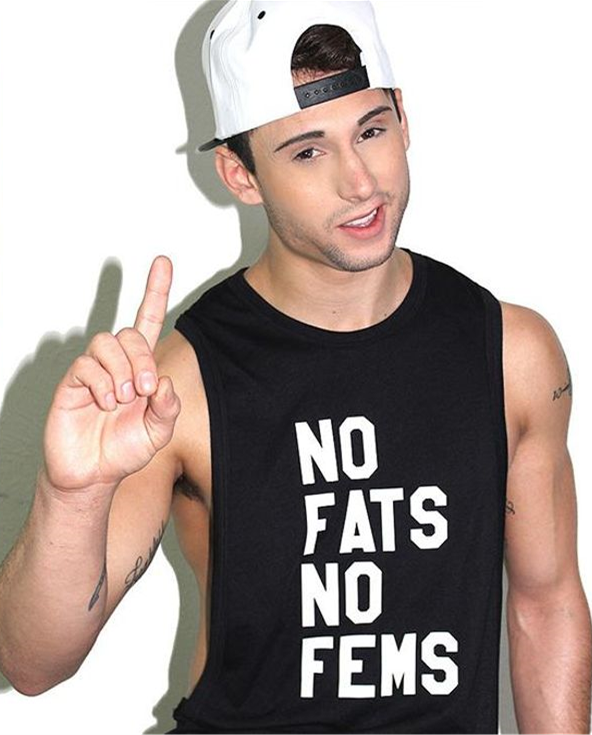
Eating disorders in gay men
Fatphobia in the gay community can have
dangerous consequences, including
increased rates of eating disorders
among gay men. Research has shown that
gay men are more likely to have eating
disorders than their straight
counterparts. One study found that 14%
of gay men had a current or previous
eating disorder, such as anorexia
nerovsa (AN) or bulimia nervosa (BN),
and an additional 50% reported
significant risk factors for eating
disorder development.
Research also indicates that compared to
straight men, gay men:
--Report less control related to eating
--Engage in more binge eating episodes
--Engage in more frequent dieting
--Engage in more purging behaviors
--Exercise more often
This is
true of gay adolescents and young adults
as well, who are more likely to engage
in compulsive exercise, caloric
restriction, binging, purging, fasting,
and diet pill use. It was also found
that these gay teens were more likely to
experience a decrease in weight from
adolescence to young adulthood.
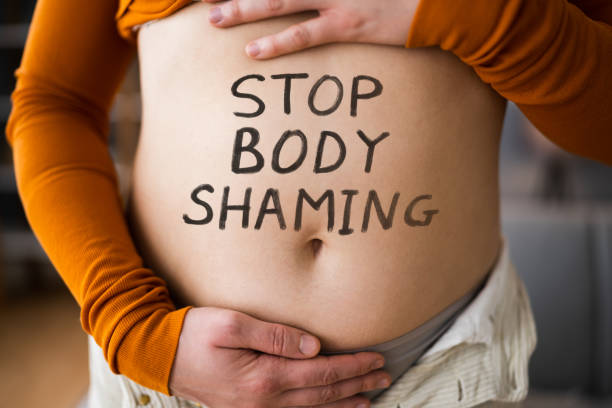
Physical Fitness vs. Body Shaming
Fatphobia is Alive and Rampant in the
Gay Male Community
Queen: Fat Bottomed Girls
The Ideal Woman’s Body, According To
Science
Jameela Jamil Defends Sam Smith After
the Singer was Body-Shamed
Body Image, Sexual Orientation, and
Gender Identity
All About Body Image: How
Psychologists Define It and How It
Affects Health and Well-Being
Sam Smith Photo Incited a Body-Shaming
Debate on Gay Twitter
Study Proves Gay Men Fat Shame One
Another
Grindr Users Share Their Experiences of
Body Shaming
Men in the Mirror: A Closer Look at Body
Image
Don't Let Body Shame Keep You From
Celebrating Pride
Belly Kisses by Rachel Wiley
Eating disorder risk factors for
gay men community
Risk factors are biological,
sociological, or psychological
influences that increase the likelihood
of developing a mental health condition
like an eating disorder. Gay men have
been shown to experience the following
risk factors at higher rates than
heterosexual men:
--Drive for muscularity and thinness
--Body shape worries
--Weight concerns
--Eating concerns
--Poor body image
--Body image anxiety
--Internalization of “ideal” body type
--Susceptibility to advertising and
marketing related to appearance
--Frequency of talking about appearance
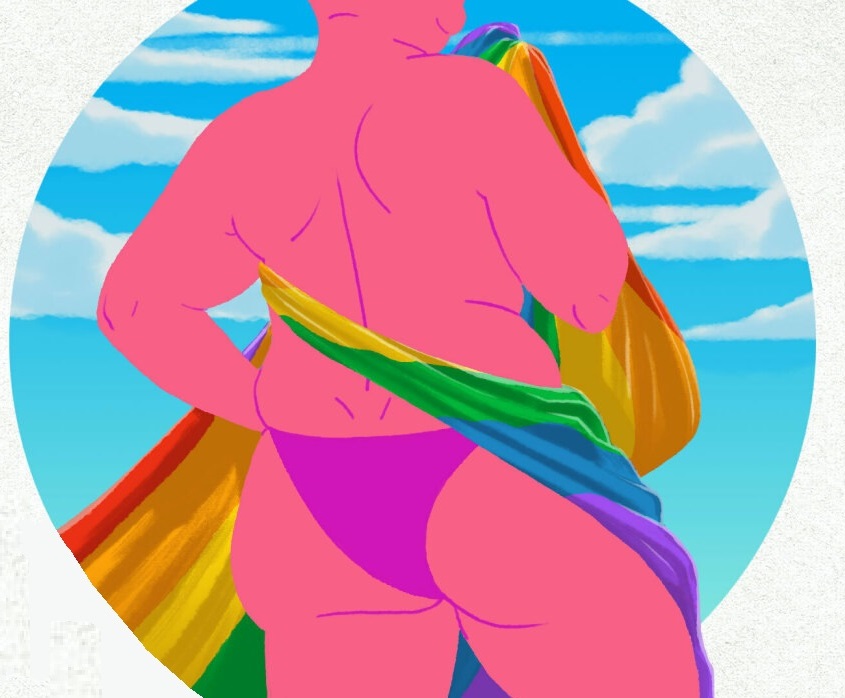
One study
found that 63% of gay men based their
self-worth on their weight and
appearance, while about 50% experienced
dissatisfaction with their eating
behaviors.
Additionally, gay men report a higher
disparity between their current body
shape and the body shape they think they
need to obtain in order to attract a
partner. And this disparity can lead to
anxiety about weight, shape, and eating
behaviors, including disordered eating
behaviors. This research suggests that
beliefs related to partner preferences
can contribute to disordered eating and
subsequent eating disorders in gay men.
Compared to their straight peers, gay
adolescents and teens experience:
--Increased desire for toned muscles
--Higher rates of body dissatisfaction
--Greater increase in shape and weight
concern as they got older
--Increased desire to resemble men in
the media
--Increased focus on being lean
Other
factors, such as experiencing peer
pressure, living in a higher-weight
body, and perceived lower levels of
masculinity, lead to increases in body
dissatisfaction, which can then cause
disordered eating behaviors.
The LGBTQ Body Image Problem
Sam Smith Talks About Their Struggle With Body Weight
At New York’s Fat Queer Beach Day, Everyone Is Hot
Why We Need Queer Fat
Representation: We Are Worth Taking Up
Space
How Body Shaming and Body Dysmorphia
Affect the Gay Community
Sam Smith Unapologetically Speaks on
Body Dysmorphia Amidst Recent Fat
Shaming
Comments About Sam Smith's Sequined
Jumpsuit Show Body Shaming Is Still an
Unfortunate Reality
Ways to Deal with Body Shaming
Sam Smith Opens Up About Overcoming Body
Dysmorphia
Why Body Image Issues Pervade the Gay
Community
For Shame, Body Shamers!
No Fats, No Fems: Everything That's
Wrong With the Gay Community
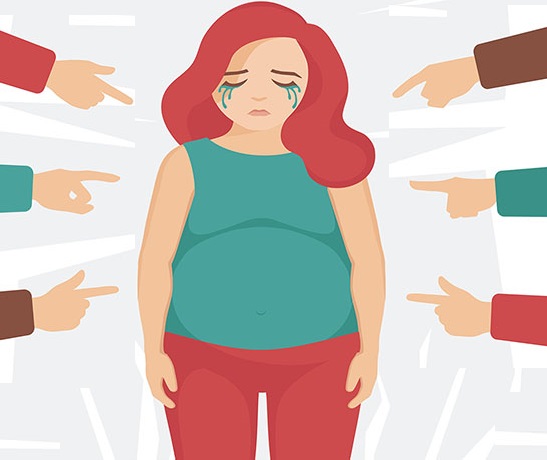
Risk factors related to sexuality and
gender expression
Researchers have found several risk
factors that are specific to a gay man’s
sexual orientation and gender
presentation, including:
--Ambivalence about queerness
--Preoccupation with how others view
their sexual orientation
--Attending a gay-specific recreational
group
--Viewing pornography (however, this
does not mean pornography is bad or
harmful; it simply exposes gay men to
“ideal” men’s bodies)
--Experiencing sexual objectification
--Childhood bullying for gender
nonconformity
--Conforming to masculine norms
--Internalizing athletic-appearance
ideals
--Experiencing discrimination
--Hiding sexual orientation from others
--Internalized homophobia
--Internalized homonegativity
--Perceived stigma
--Identifying as a member of the gay
community
--Social sensitivity
--Having an unmet need to belong to the
community
--Viewing femininity in a negative light
--Gender role conflict
--Being a “femme”
Eating
disorders are complex, multi-faceted
mental illnesses caused by a multitude
of environmental and genetic influences.
As such, just because a person has a few
of the above risk factors, it doesn’t
mean they’ll necessarily develop an
eating disorder. However, it does mean
they may be vulnerable to disordered
eating.
Sam Smith Unapologetically Speaks on
Body Dysmorphia Amidst Recent Fat
Shaming
Comments About Sam Smith's Sequined
Jumpsuit Show Body Shaming Is Still an
Unfortunate Reality
Lizzo on Body-Shaming Comments on Social
Media
The Ideal Woman’s Body, According To
Science
If Sam Smith Was Thin, Cis And Straight,
They Wouldn’t Be Ridiculed
Sam Smith Opens Up About Overcoming Body
Dysmorphia
Amy Schumer Talks Fat-Shaming, Hits Back
at Body Critics
Jameela Jamil Defends Sam Smith After
the Singer was Body-Shamed
Sam Smith Photo Incited a Body-Shaming
Debate on Gay Twitter
Ariel Winter Responds to Body-Shaming
Comments on Instagram
Lizzo Addresses Fat-Shaming Comments
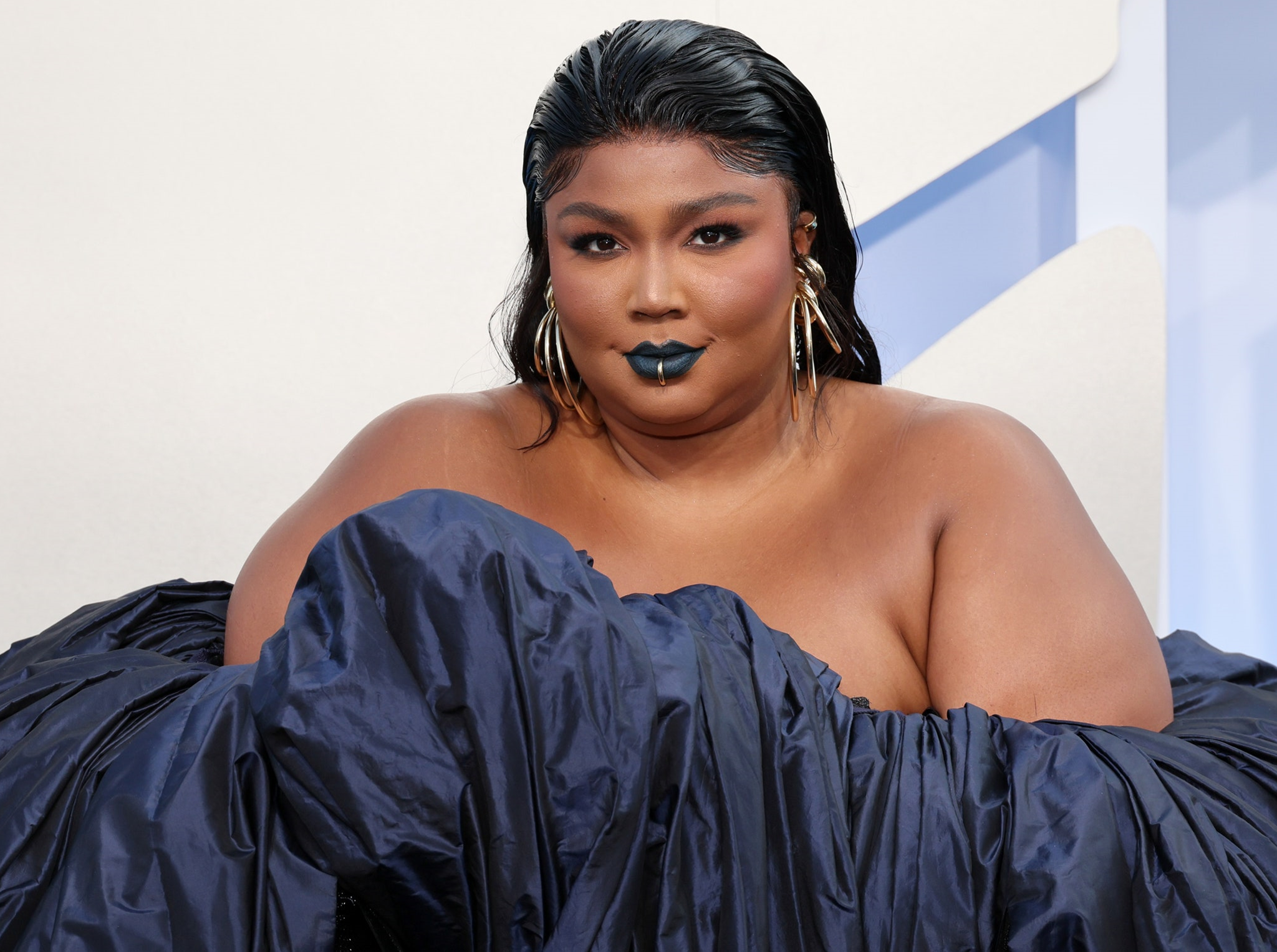
Combating fatphobia in the gay
community
If you are a member of the gay community
and want to actively work to combat
fatphobia exhibited by fellow queer men,
here are some things you can do:
--Educate yourself on fatphobia, both
overt and covert examples, the various
settings it occurs in, and its harmful
effects
--Educate yourself about initiatives
like Health At Every Size (HAES)
--Read about diet culture and how it
influences fatphobia and weight stigma
--Follow social media accounts
advocating and organizing for fat
liberation
--Examine your own misogyny and the
beliefs you’ve internalized about
attraction and worth
--Challenge the fatphobic attitudes of
others within and outside of your
community
--Correct people when they refer to
their prejudices as “preferences”
--Learn to appreciate and celebrate your
own body, no matter the size, shape, or
weight
--Avoid self-criticism and toxic body
appearance talk
--Avoid using judgmental and shaming
language related to food, such as “good”
or “bad” foods
--Take a zero-tolerance stance on weight
discrimination, fatphobia, and toxic
behaviors
At the
end of the day, there cannot be queer
liberation without fat liberation, too.
Unfortunately, many queer men do not
feel welcome in the gay community due to
fatphobia, weight stigma, and negative
weight-based attitudes and views. For
gay men who already experience
discrimination from the world at large,
exclusion from their own alleged
community can feel extra painful. It is
going to take a lot of unlearning and
intentional work to make gay spaces safe
and inclusive for people of all sizes.
[Source: Within Health, June 2022]
The LGBTQ Body Image Problem
How Body Shaming and Body Dysmorphia
Affect the Gay Community
Sam Smith Unapologetically Speaks on
Body Dysmorphia Amidst Recent Fat
Shaming
Comments About Sam Smith's Sequined
Jumpsuit Show Body Shaming Is Still an
Unfortunate Reality
Ways to Deal with Body Shaming
Sam Smith Opens Up About Overcoming Body
Dysmorphia
Why Body Image Issues Pervade the Gay
Community
For Shame, Body Shamers!
No Fats, No Fems: Everything That's
Wrong With the Gay Community
Queen: Fat Bottomed Girls

HOME
QUEER CAFE
│ LGBTQ Information Network │ Established 2017
|